Samsung QN900D is undoubtedly the top model for 2024. This television is equipped with Mini LED technology, which offers excellent picture quality – deep blacks and high brightness make films and high-resolution content look fantastic. When watching dynamic scenes in movies, the colours and details were exceptionally good – especially after calibration. HDR also delivers – bright elements have great detail levels, and colours are vibrant and natural. One of the strongest points of QN900D is the smooth motion. Supporting a refresh rate of 240 Hz at 4K resolution is rare in the market. Dynamic scenes in sports or games look incredibly smooth, with no trace of blurring. However, it’s worth adding that the full capabilities of this feature will mainly be utilised by advanced PC users. An input lag of 9 ms additionally ensures very responsive gameplay, which will surely please gamers. Tizen runs smoothly and offers access to all popular applications, such as Netflix, YouTube, or Disney+. Moreover, SmartThings features and support for AirPlay make it easy to connect the television with other devices in the home. This is a great solution if you value convenient control of your smart home. An additional feature is Ambient Mode – the television can blend into the living room decor by displaying decorative graphics. QN900D not only performs well but also looks great. Slim bezels, a central stand, and the One Connect module that allows cables to be hidden make the television present elegantly. If aesthetics are important to us, it will be hard to find something better. As a flagship model, QN900D is simply expensive. Unfortunately, the lack of agreement between Samsung and Dolby Vision may still be a significant downside. Especially when watching content on platforms that utilise this format. In the most demanding HDR scenes, it also happens that the contrast is not as perfect as one might expect. And what about 8K resolution? For now, it’s hard to find content that fully utilises it, unless we are technology enthusiasts of the future. Samsung QN900D is certainly a television for those seeking a top-tier device and are willing to pay for it. However, if we are looking for similar quality at a significantly lower price, it’s worth mentioning the equally good QN95D – it offers a similar picture quality, without the 8K resolution, which is still more of a curiosity than a standard.
- Matching (Score)
- Our verdict
- TV appearance
- Where to buy
- Contrast and black detail
- HDR effect quality
- Factory color reproduction
- Color reproduction after calibration
- Smoothness of tonal transitions
- Image scaling and smoothness of tonal transitions
- Blur and motion smoothness
- Console compatibility and gaming features
- Input lag
- Compatibility with PC
- Viewing angles
- TV efficiency during daytime
- Details about the matrix
- TV features
- Apps
- Playing files from USB
- Sound
Samsung QN900D Neo QLED 8K vs Samsung QN85F
Direct compare
QN900D / Neo QLED / Excellence Line
QN85F

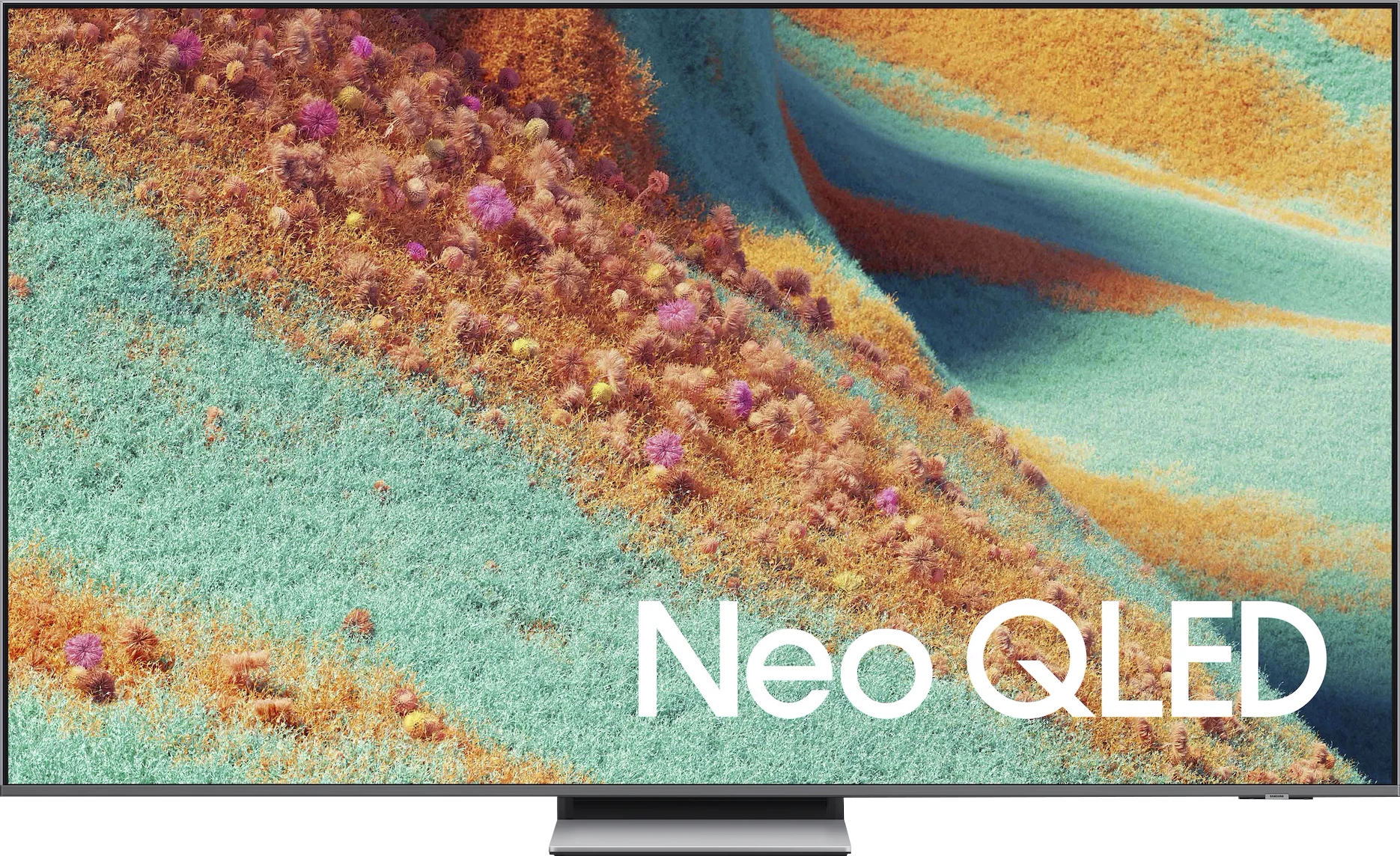
Panel type: LCD VA (wide viewing angle)
Resolution: 7680x4320
System: Tizen
Model year: 2024
Complete the survey to find out the result

Panel type: LCD VA
Resolution: 3840x2160
System: Tizen
Model year: 2025
Complete the survey to find out the result

Overall rating
7.5
7.6
Movies and series in UHD quality
7.6
7.5
Classic TV, YouTube
7.8
7.2
Sports broadcasts (TV and apps)
7.6
7.0
Gaming on console
9.0
8.7
TV as a computer monitor
8.0
8.4
Watching in bright light
5.0
6.9
Utility functions
7.4
7.3
Apps
8.7
8.7
Sound quality
7.4
7.6
Complete the survey to find out what fits your preferences
Advantages
Great contrast and blacks
High brightness - good HDR effect
The smoothest TV in the world - 4K@240Hz
Great for gaming - low input lag, many features for gamers
Good digital processing - handles low-quality material well
Advanced operating system - Tizen
Great design - super slim, OneConnect, "floating" central stand
High HDR brightness (even 1700–1800 nits)
Very good contrast and deep blacks
2 times the number of dimming zones compared to its predecessor (55")
144 Hz panel supporting VRR and ALLM
Unique Game Motion Plus feature – a distinctive smoother for gaming
Low input lag
Satin finish on the panel works great during the day combined with high brightness
Advanced Tizen platform: with AirPlay, SmartThings, and a convenient solar remote
Well-designed stand. Hybrid – can be a central base or side legs
Solid sound with pleasant bass and Dolby Atmos support
Disadvantages
Price
No Dolby Vision
No support for Dolby Vision and DTS:X
No recording function from built-in tuners and PiP
Issue with HEIC files in the player
No proper HGiG* support in game mode
*This seems to be an update bug that we hope Samsung will fix quickly. We're keeping an eye on the situation for you.
Our verdict
The Samsung QN85F is a television that perfectly demonstrates the purpose of the Neo QLED line. On one hand, it has everything that a modern user expects – high brightness, excellent fluidity, and full support for gamers. On the other, it’s still an LCD, so it’s a technology that comes with certain compromises. The question is whether these compromises actually hinder everyday use? In practice, it’s hard not to be impressed by how the QN85F performs with HDR movies. A brightness level of 1700–1800 nits makes watching dynamic scenes truly feel like experiencing the “HDR spark,” which many competitive televisions lack. The lighting effects in films or series can literally overwhelm with intensity, yet the television doesn’t lose detail and doesn’t turn the entire image into a washed-out blob. This is precisely the kind of spectacular experience that viewers investing in a new screen are searching for. Gamers also have reasons to be pleased. (Well, maybe apart from one shortcoming related to HGIG.) It supports 144 Hz, variable refresh rate VRR, and automatic game mode ALLM. This is already a must-have set in this class, but Samsung goes further by adding a unique feature called Game Motion Plus. Thanks to this, the image in games becomes smoother, resembling the operation of a motion smoother in films, but without a noticeable increase in latency. This solution truly sets the QN85F apart from the competition. On top of all this, there’s everyday convenience. The Tizen system is fast, stable, and full of apps that we actually use – from Netflix to Apple TV to YouTube and Disney+. There’s also AirPlay support, a comprehensive SmartThings platform, and a remote that, instead of being intimidating with dozens of buttons, offers simple navigation and quick access to the most important functions. This makes the QN85F a television that you just want to reach for every day. Sure, you can point out the shortcomings. There’s no Dolby Vision, no USB recording, and the viewing angles typical of a VA panel won't impress if you sit at a steep angle. But all of this pales in comparison to how versatile and refined the QN85F is. During the day, it handles bright rooms excellently, in the evening it delivers cinematic emotions in HDR, and in games, it provides smoothness and low input lag that other models could envy. Overall, the QN85F is a television that not only successfully continues the value-for-money tradition of its predecessor, the QN85D, but even expands it with several strong points. It’s equipment that’s hard to describe in any other way than as a “safe choice” – one that won’t disappoint in any scenario and is very likely to meet the expectations of even the most demanding users.
TV appearance





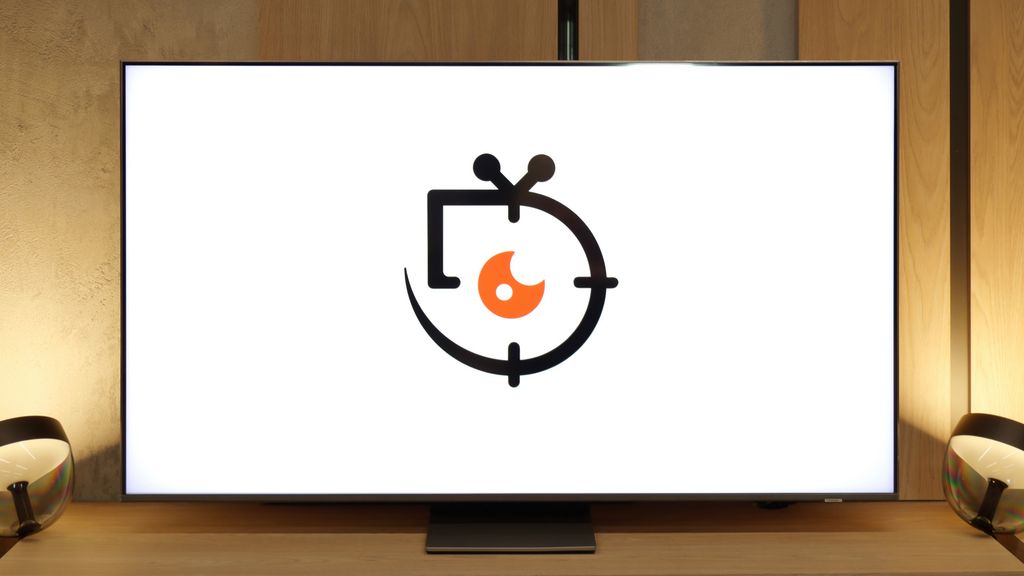
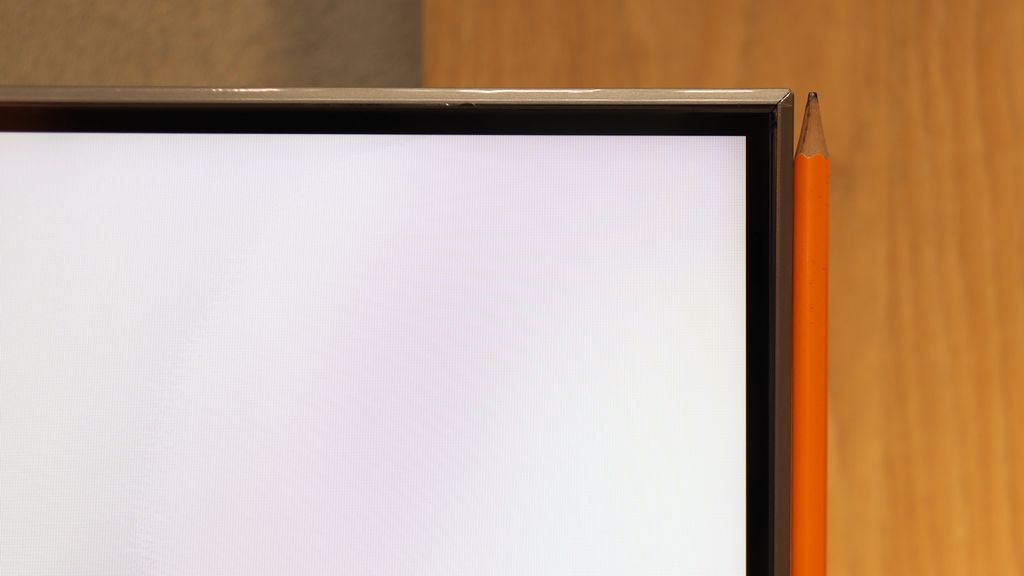
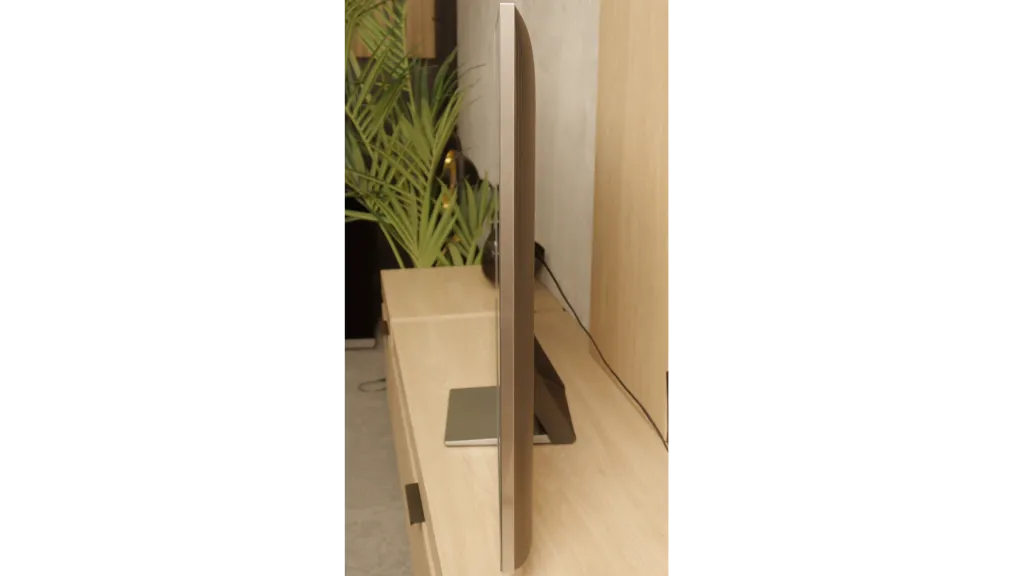
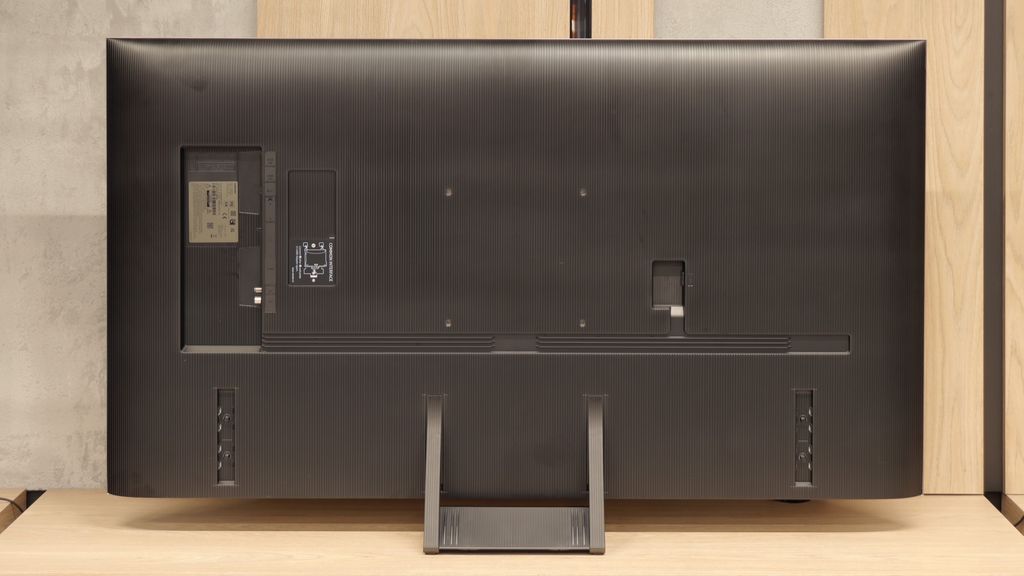
Contrast and black detail
8/10
7.5/10
Local dimming function: Yes, number of zones: 1344 (56 x 24)
Local dimming function: Yes, number of zones: 240 (20 x 12)
Contrast:

Result
∞:1

Result
205,000:1

Result
89,000:1

Result
7,800:1

Result
4,000:1

Result
101,800:1

Result
18,650:1

Result
47,050:1

Result
9,700:1

Result
4,350:1
Halo effect and black detail visibility:

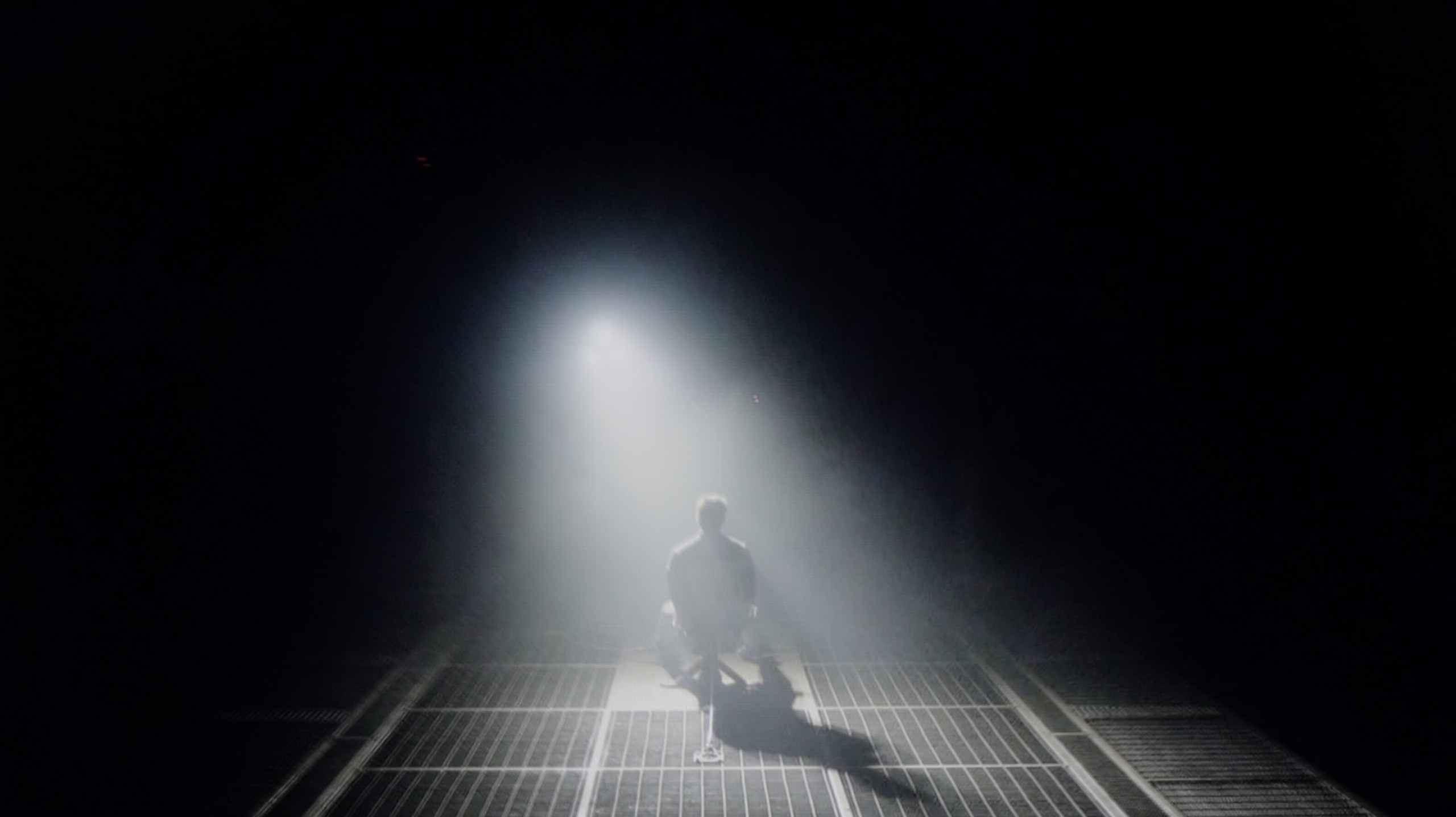
As befits the flagship model in the series, the Samsung QN900D television is equipped with a VA panel, which in the 65-inch version offers an impressive number of zones – as many as 1344. It’s worth noting that larger sizes of this television have even more zones, which naturally translates to better contrast. During tests in scenes from the film "Oblivion," the QN900D performs excellently. Contrast values approaching infinity are truly stunning, allowing this television to be confidently compared with OLEDs. Unfortunately, like all LCD televisions, this model also has its limitations. In the case of very small elements, certain irregularities are visible, such as halo effects (e.g., in the film "Sicario 2") and at times significant screen dimming (e.g., in scenes from the film "Gravity"). Despite these imperfections, the QN900D Samsung is undoubtedly one of the best LED televisions available on the market, capable of generating very high contrast.
Our editorial team received a 55-inch model with a VA panel. In the case of NeoQLEDs, which are TVs with Mini-LED backlighting, size is crucial because the larger the screen, the more local dimming zones it can have. This directly translates to higher contrast. In the version we tested, we counted as many as 240 dimming zones, which is twice as many as last year's QN85D. Theoretically, such an increase should deliver an equally impressive improvement in contrast. Unfortunately, practice showed otherwise – the QN85F delivers results very close to its predecessor. Yes, in some scenes with a lot of black or in areas where details in highlights are crucial, there is a noticeable improvement, but it is not proportional to the number of zones. The Mini-LED technology can be temperamental, and sometimes delicate halos appear around small, bright objects. This is a typical compromise that one must accept with such a solution. However, this doesn’t change the fact that the contrast in the QN85F is at a very high level and will easily satisfy most users, even the more demanding ones. However, we have the impression that Samsung could fine-tune the algorithms controlling the dimming because we know from experience that they can perform really well in other models.
HDR effect quality
6.6/10
6.9/10
Luminance measurements in HDR:

Result
1447 nit

Result
665 nit

Result
907 nit

Result
432 nit

Result
793 nit

Result
1248 nit

Result
860 nit

Result
1093 nit

Result
465 nit

Result
957 nit
Scene from the movie “Pan” (about 2800 nits)


Scene from the movie “Billy Lynn” (about 1100 nits)


Static HDR10


Dynamic: HDR10+
Dynamic: HDR10+


HDR luminance chart:
Samsung QN85F
HDR luminance
Samsung QN900D Neo QLED 8K
HDR luminance
The Samsung QN900D easily showcases its high capabilities in light production during synthetic tests – 1400 nits is truly an impressive result. It also demonstrated these capabilities in the first scene of the movie "Life of Pi," where we see a brilliant burst of the rising sun. However, due to issues with the dimming algorithm, some problems can be observed here. In the test scenes from "Sicario 2" and the second scene from "Life of Pi," these values are not as high, averaging around 500-600 nits. While this may not be the worst result among Mini LED TVs, more could be expected given the price of the television. Nevertheless, the television deserves praise for covering a wide colour gamut of DCP P3 at 96%. Although there are technologies offering higher values, this result is still satisfactory.
Although more than twice the number of dimming zones compared to its predecessor did not result in a spectacular leap in black levels and contrast, we definitely felt it in the HDR effect itself. The QN85F is up to 50% brighter than last year's model and it makes a huge impression in dynamic scenes. Peak brightness can reach almost 1700–1800 nits, which is an impressively high result for this Mini-LED class. The best part is that almost regardless of the scene being watched, the HDR effect remains strong and vibrant. In four out of five test scenes, brightness was maintained around 1000 nits, a level that in most cases allows the viewer to feel the true magic of this format. Of course, in scene number 4 from the film Sicario 2, the limitations of Mini-LED technology become apparent – the brightness of the helicopter's subtle light drops to around 500 nits. This isn't an outstanding result, but it is still much more acceptable than last year's model. Samsung deserves applause for the dramatic improvement in brightness with the QN85F compared to its predecessor. However, there's a certain trend visible in this year's televisions – the manufacturer has worsened colour gamut coverage. Although the QN85F has a QLED panel, its result at around 90% DCI-P3 is average, and in the most demanding films, it may lead to less vibrant colours than its predecessor. Despite this drawback, the overall HDR effect is at an excellent level and truly makes a big impression in this class of devices.
Factory color reproduction
6.6/10
4.8/10


Factory Mode
After calibration


Factory Mode
After calibration
The QN900D television offers a Filmmaker mode that is designed to watch movies in the most natural way possible; however, this mode is not without its flaws. For HD content, the white balance shows a dominance of red and blue, which causes the image to shift towards pink hues. In contrast, for 4K HDR content, the situation is reversed – the reduction of blue and red levels results in warmer scenes and a shift towards yellow tones. This is confirmed by Color Checker tests, which clearly show that the colour samples veer in that direction.
When it comes to brightness and the associated contrast, the gamma is significantly distorted. The biggest issue is a noticeable jump at the beginning of the curve, indicating that dark details are overly brightened, causing the image to lose depth in the darkest areas - this is due to local dimming. For 4K HDR materials, the EOTF curve looks quite good, but it remains below the reference level, impacting the overall dynamics of the image.
Samsung QN85F offers several preset picture modes, but out of the box, the television starts in 'Eco' mode. We could almost end the discussion here, as using this setting on such a model makes little sense – the picture is washed out, unpleasant, and far from what we expect from a television of this class. Therefore, we conducted our tests in the best available mode, which is Filmmaker mode. Its purpose is to faithfully reproduce what the directors saw during filming, and indeed, it is the setting that performs best among all factory options. However, this doesn't mean it's free from flaws.
Both in SDR and HDR, the QN85F prominently highlighted warm colours. This was due to a lack of white balance, where the blue colour was noticeably absent. Additionally, the image was sometimes overexposed – both the gamma brightness characteristic and the EOTF curve indicated that the television has a tendency to blow out scenes. In SDR, colour reproduction errors (Delta E around 4–5) were still acceptable, but in HDR, the inaccuracies became quite significant and clearly deviated from what the creators intended to show us. Fortunately, Samsung provides a wide range of calibration tools in its televisions, so – as always – we proceeded with professional calibration to see how much could be improved.
Color reproduction after calibration
8/10
8.5/10




After calibration, the Filmmaker mode can truly be called worthy of its name. The white balance for both HD and 4K HDR content has significantly improved, resulting in colours that are more natural and consistent. The image has gained in realism, with pink hues in HD content effectively eliminated, as well as the yellow haze in 4K HDR content. Thanks to the calibration, the television now offers much better colour reproduction, positively impacting the viewing experience.
When it comes to brightness, the situation with gamma is now the opposite – a clear drop is visible at the beginning of the graph, making the darkest details harder to discern. The EOTF curve for 4K HDR content has remained largely unchanged and is still below the reference level, indicating that the television still struggles to maintain adequate brightness. This is related to the aggressive dimming algorithm that affects the overall brightness of the image. You can see how the television fights to maintain high brightness or perfect black.
Despite the limitations associated with local dimming, the Samsung QN900D has improved in colour reproduction quality, as confirmed by the Color Checker test results – the colour samples are now much closer to the references, making the image more natural and pleasant to the eye.
After calibrating the movie mode, we managed to tame the colours in both modes almost to perfection – most of them did not exceed an error value of 3, which is the threshold of perceivability by the human eye. The image became more natural, fuller, and at the same time free of the overexposure that was noticeable right after taking the television out of the box. This demonstrates the significant potential that lies within the QN85F and how well it responds to precise settings. However, this does not change the fact that certain technological barriers cannot be overcome. Despite the enormous benefits of calibration, there are still limitations to the panel itself. Although the number of dimming zones has doubled compared to its predecessor, the algorithms controlling the backlighting can manipulate brightness in their own way. Sometimes this leads to slight colour inaccuracies or subtly visible halo effects around bright objects. Nonetheless, the viewing experience after calibration is really enjoyable and shows how good a screen the QN85F can be if we just take a moment for the right settings.
Smoothness of tonal transitions
8/10
9/10

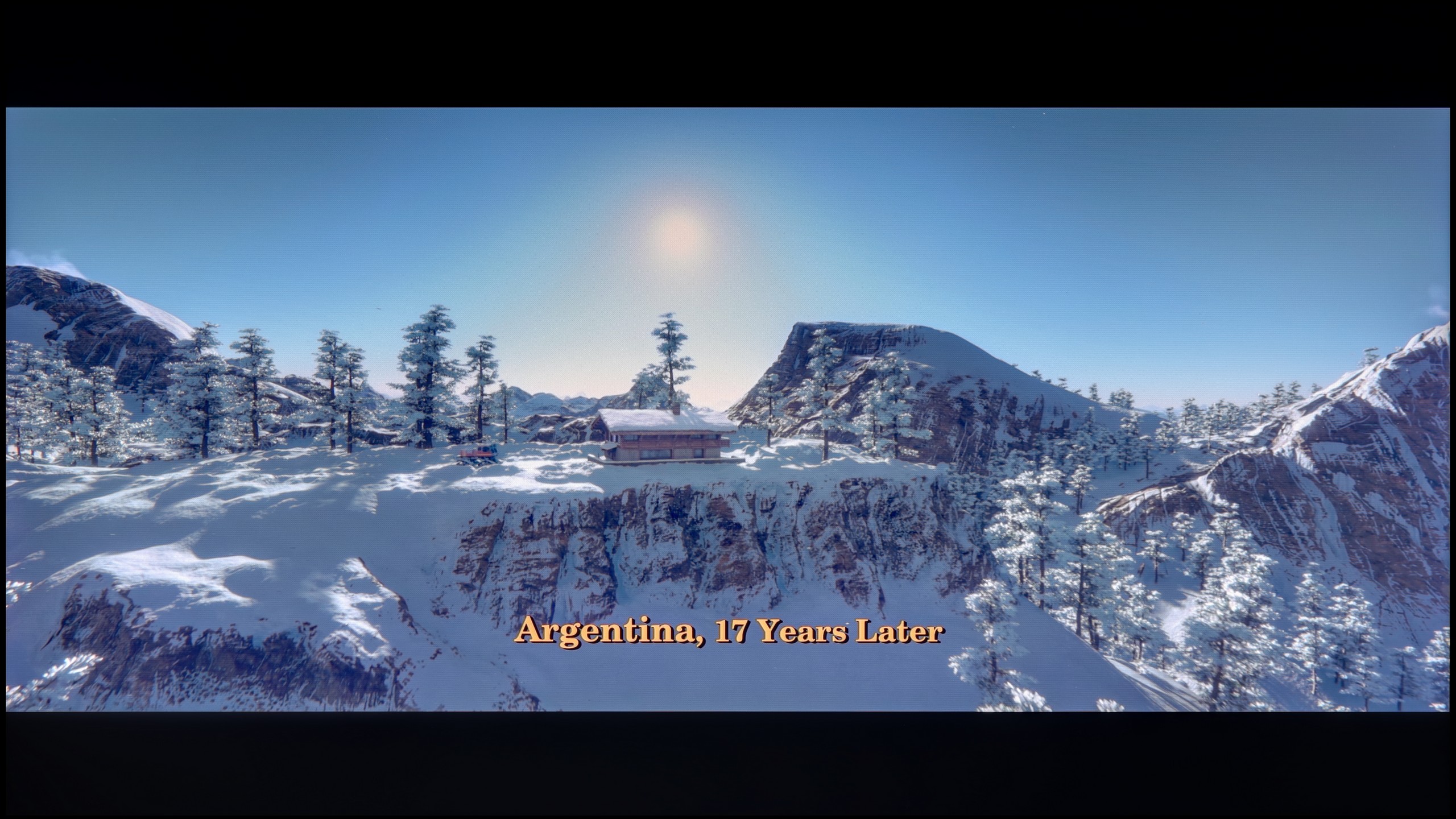










The Samsung QN900D TV handles tonal transitions smoothly, deserving a rating of 8/10. The colour gradation is generally good, although not perfect – in darker scenes, some imperfections may be noticeable to more demanding users. Despite these minor flaws, the effect should satisfy most viewers, offering natural transitions.
Minor colour errors are often practically unnoticeable; it is the fluidity of tonal transitions that is a category that even a less experienced viewer will pay attention to. Unfortunate stripes and artificial lines can completely ruin the perception of the image. Fortunately, the QN85F handles this aspect almost perfectly. Gradients are smooth, transitions between colours are seamless, and no artificial lines or distinct boundaries separating hues appear on the screen. The image remains consistent, and nothing distracts our attention from the content. Only in very extreme conditions did we notice slight issues in the grey palette, but this is a flaw typical of most televisions and it's hard to consider it a serious drawback. In practice, while watching films, we encountered no problems.
Image scaling and smoothness of tonal transitions
7/10
7.5/10
Smooth transition function

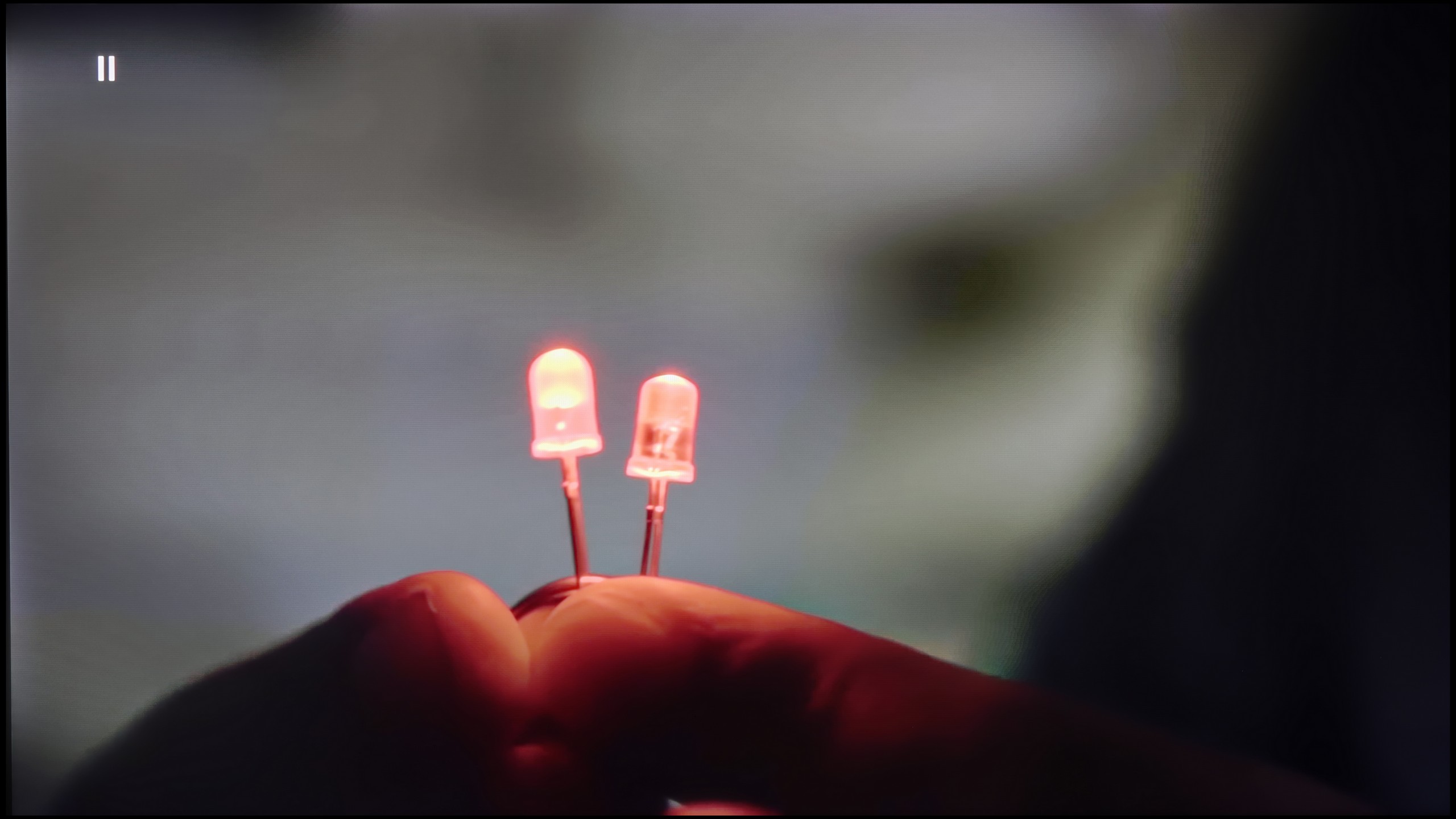
Image without overscan on the SD signal


The fluidity of tonal transitions in lower-quality materials looks fantastic – the Noise Reduction feature very effectively smooths out tonal transitions while getting rid of film grain. Although the removal of grain isn't always desirable, the overall final effect is very aesthetically pleasing, especially for those who prefer a cleaner image.
When it comes to upscaling, or image scaling, QN900D shows the tremendous capabilities of the new processor with AI technology. Photos and materials in lower resolution are scaled while retaining many details – for example, a photo with a model looks amazing, free of unnecessary jagged edges, and the branches in the background are not overly serrated.
Although the native tonal transitions on the QN85F perform excellently with 4K content, we don't always have to deal with the highest resolution material. This is where how the TV handles upscaling and digital image processing becomes crucial. This process is managed by Samsung's proprietary processor – AI NQ4 Gen2. In practice, it works very effectively. If visible colour banding or other undesirable phenomena appear on the screen, for instance with content from YouTube, they can easily be smoothed out using the "noise reduction" feature. Set to medium, it improves tonal transitions while not overly blurring desired details. However, it should be noted that – like in most Samsung TVs – this feature heavily interferes with film grain. Therefore, during movie screenings, it’s wise to use it cautiously to avoid losing the natural character of the image.
The upscaling itself looks very good. Test materials in lower resolutions were displayed sharply and clearly, with a lot of details. The only drawback remains the issue with overscan, which cuts off the edges of the screen. In most situations, this isn't noticeable, but with very old materials below HD quality, there may be instances where a fragment of the image from the left side gets slightly cut off.
Blur and motion smoothness
7.4/10
7.7/10

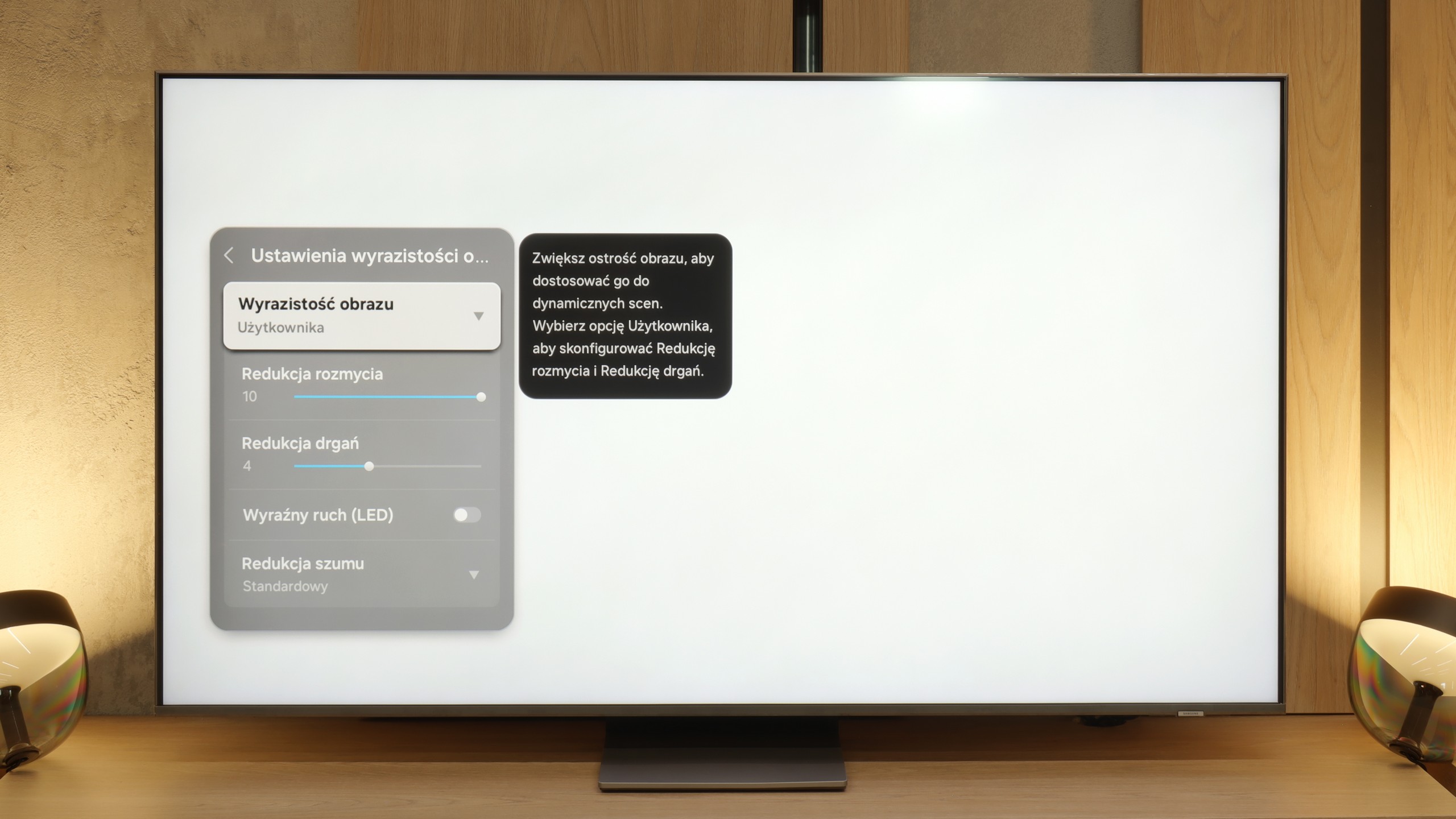
Blur (native resolution, maximum refresh rate):



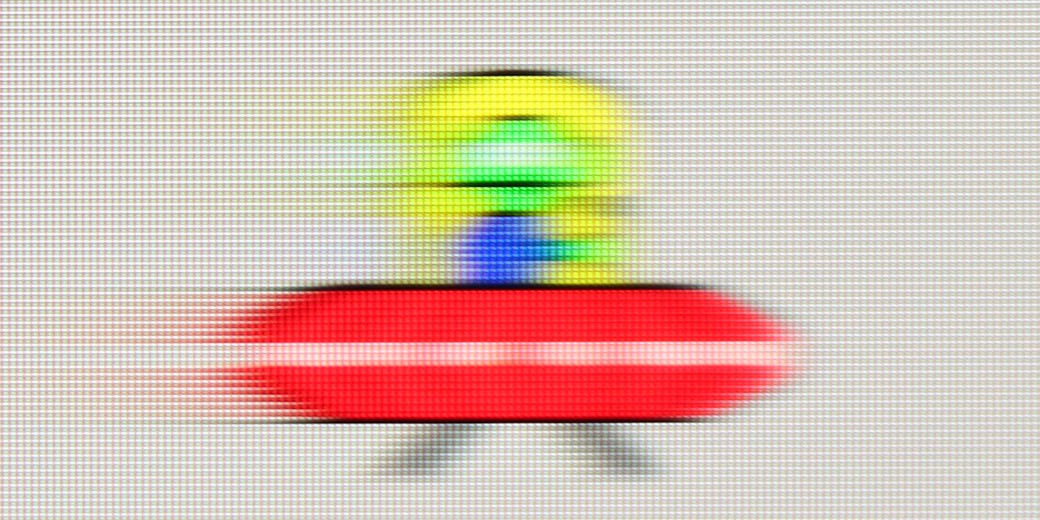
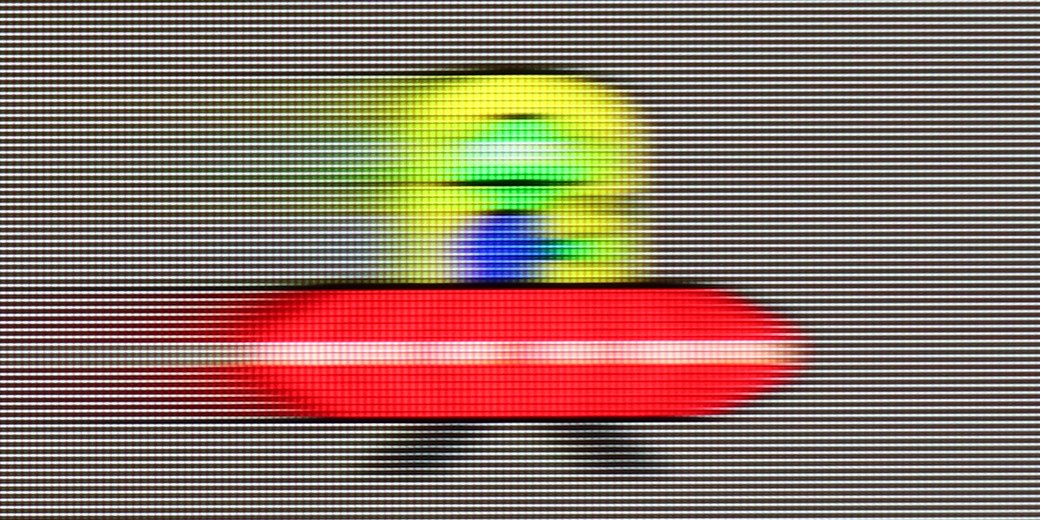
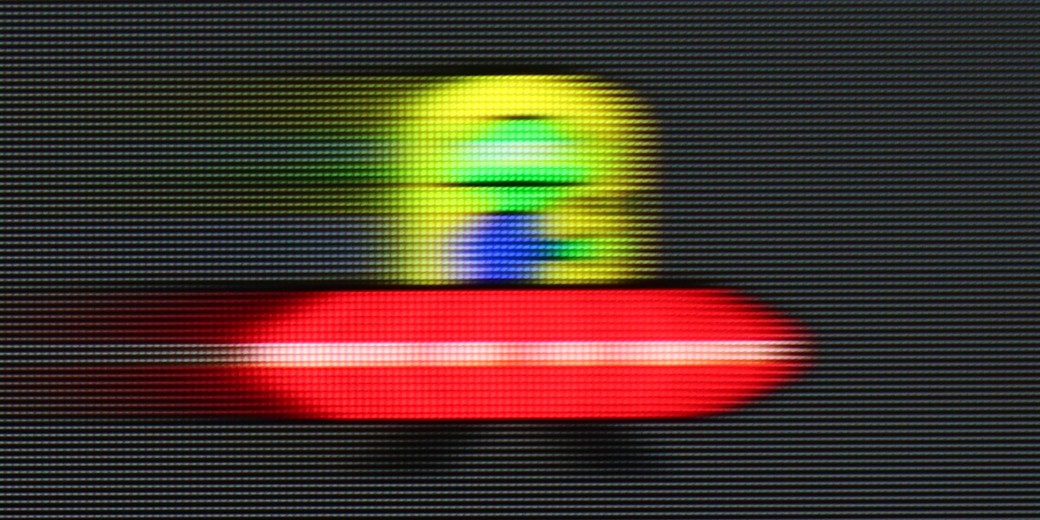
Blur (BFI function enabled):
Image flickers in this mode
Image flickers in this mode



Smużenie (2160p 240Hz):



Smużenie (4K@144Hz):

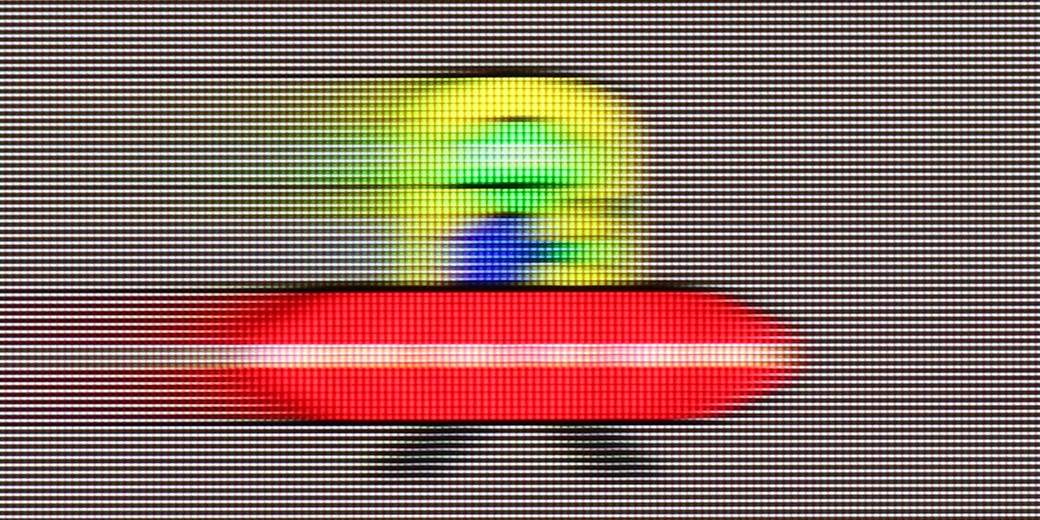
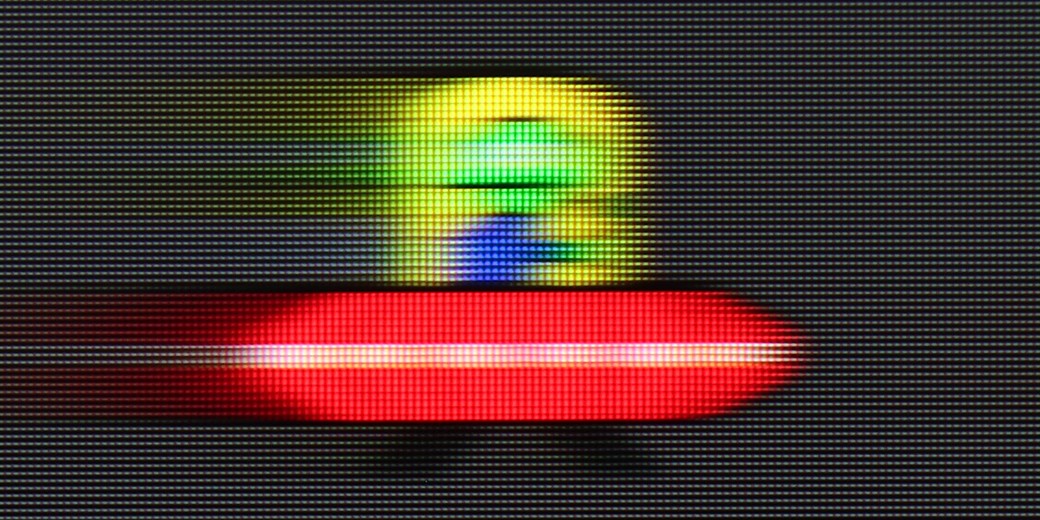
Samsung QN900D is currently the fastest television in the world – literally. A refresh rate of 240 Hz in 4K resolution is an amazing value that PC gamers will surely appreciate. As for movie fans, they won't be disappointed either – Samsung offers a 10-level scale in the picture clarity settings, allowing users to adjust the image. We can choose whether the television should provide a smoother, theatrical effect at the highest settings, or a more cinematic one, with a visible frame, at the lowest settings.
Motion blur and fluidity of movement in the QN85F is a topic worth discussing further because the TV is equipped not with a standard 120 Hz panel but with a 144 Hz one. The extra hertz will mainly be appreciated by PC gamers, but the very fact of having such an option can be seen as a nice addition and a sign of the times – it's hard to complain about the trend of faster panels since in practice, each of us would like the picture to be as smooth as possible. However, the most important thing is how the TV performs with typical 120 Hz refresh rates – in the case of consoles, sports, or films recorded at 24 or 30 frames per second. And here, the QN85F performs really well. In films, you can easily adjust the character of the picture thanks to the "image clarity" feature, where you'll find two control sliders. Key in the case of screenings is the one responsible for reducing motion judder. Lower values give the image a more cinematic character with preserved "frame-ness," while higher values lead to strong smoothing, reminiscent of television theatre.
Console compatibility and gaming features
9.5/10
8.2/10
- ALLM
- VRR
- VRR range48 - 240Hz48 - 144Hz
- Dolby Vision Game Mode
- Correct implementation of HGIG
- 1080p@120Hz
- 1440p@120Hz
- 4K@120Hz
- Game bar

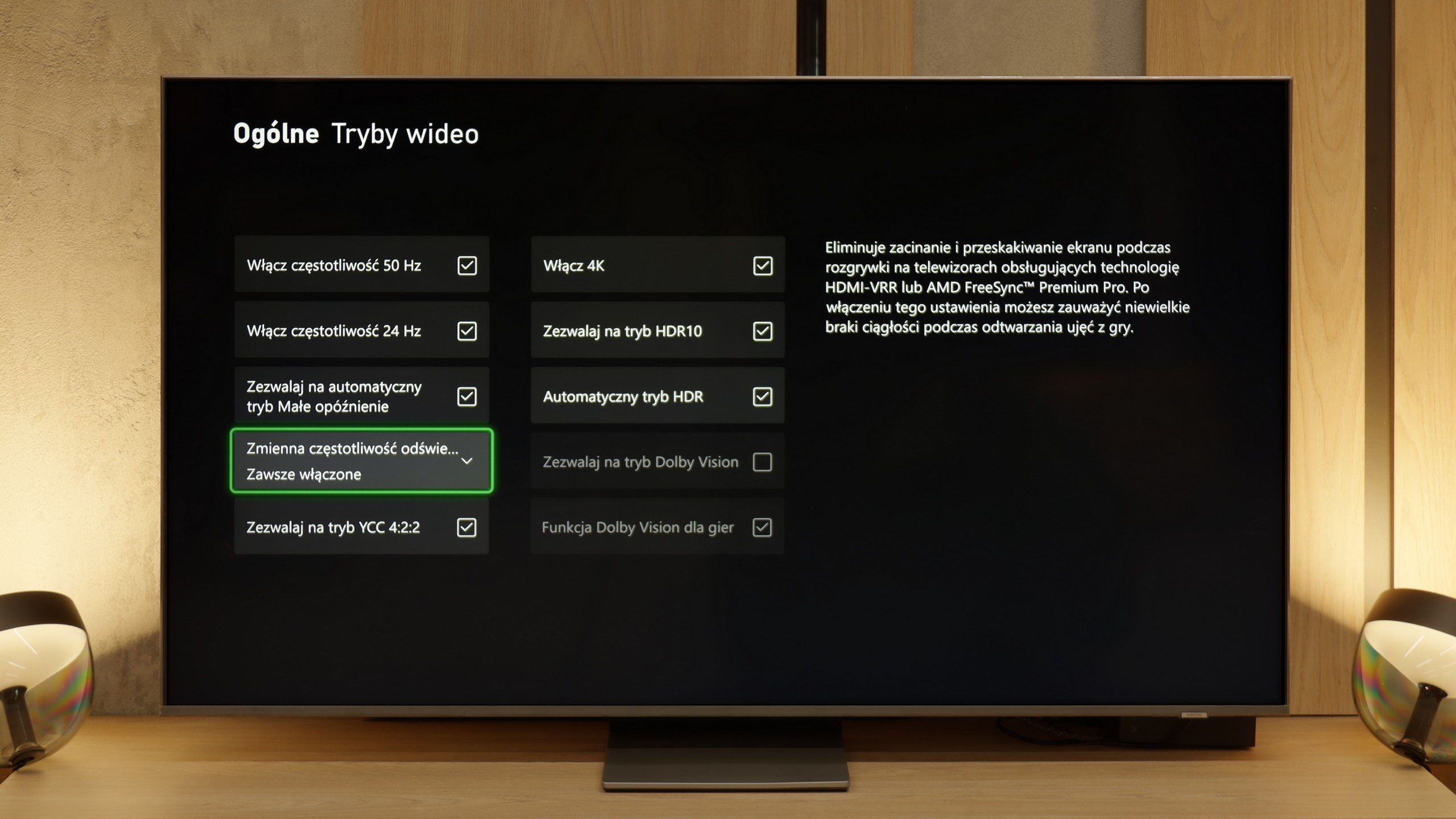

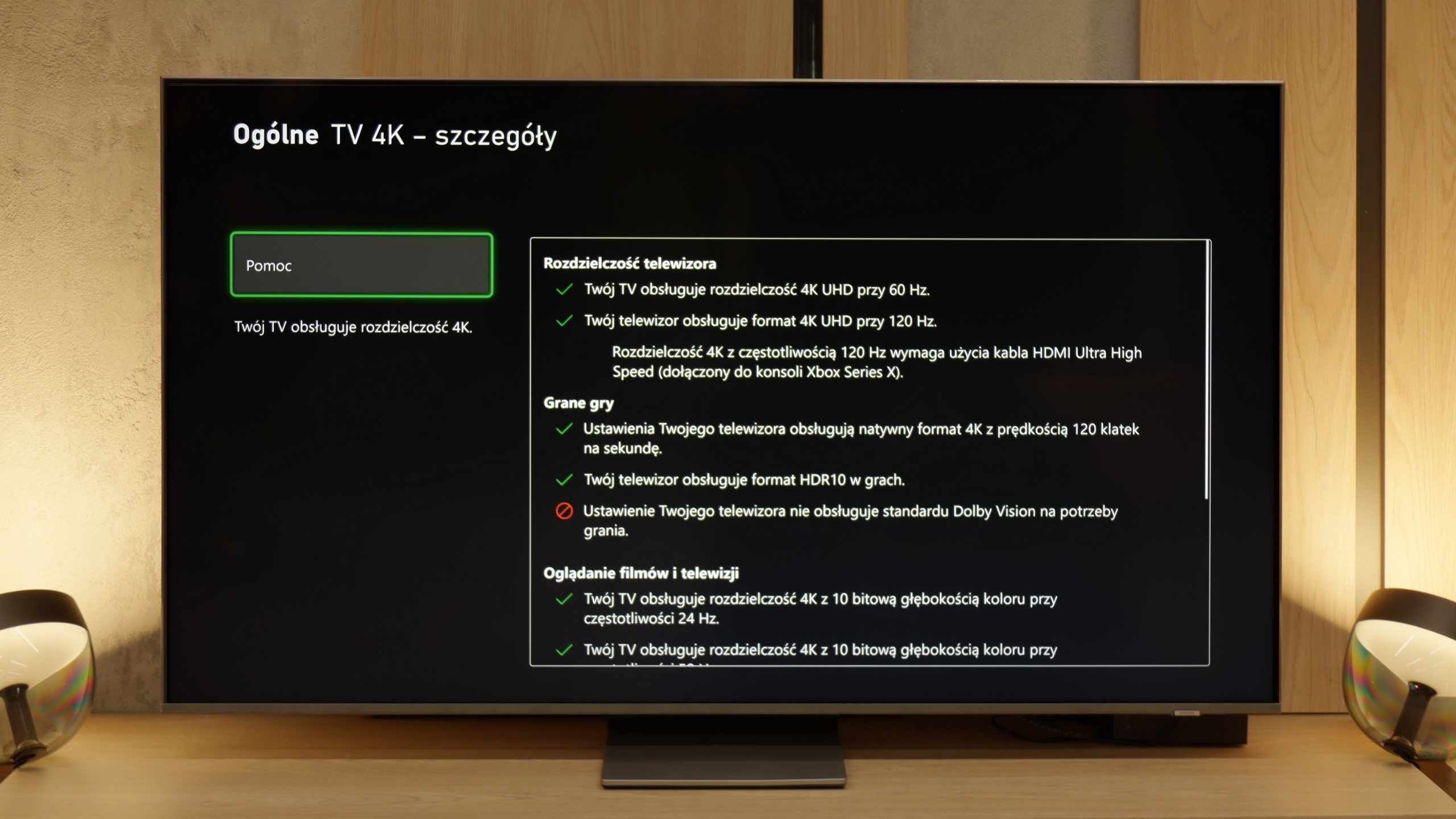

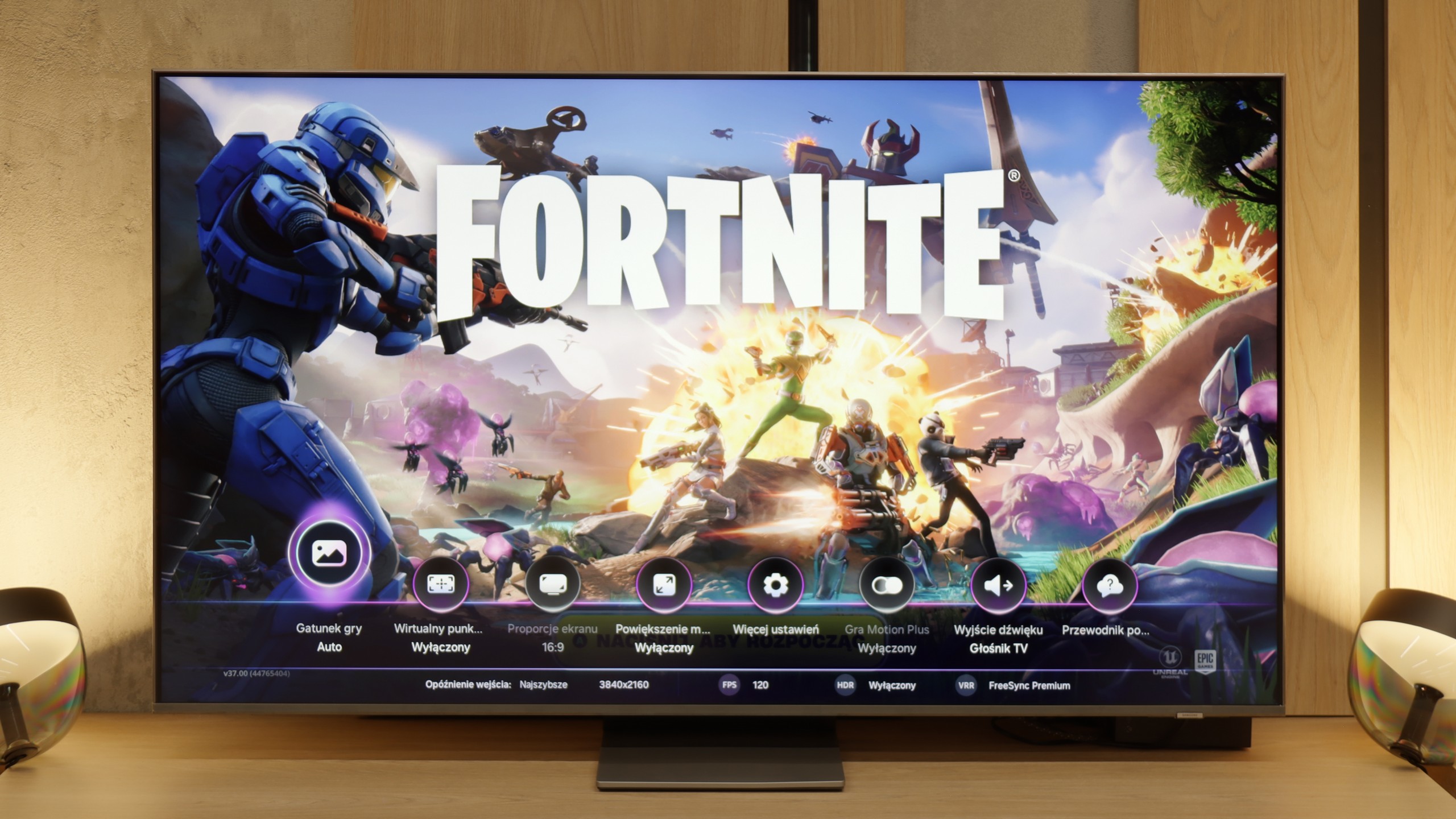

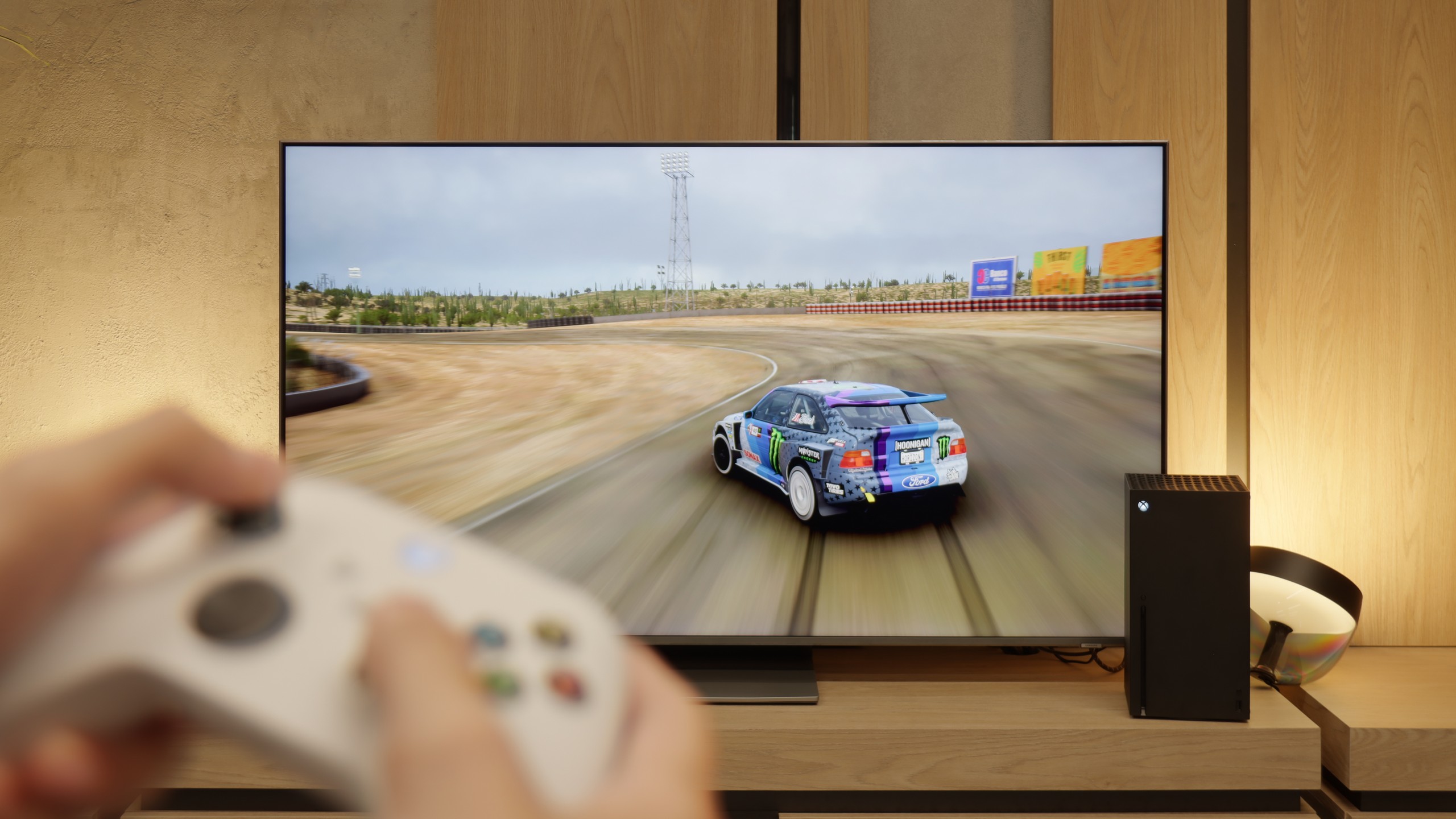
Samsung QN900D is a television that offers excellent compatibility with consoles and a range of features that gamers will appreciate. It has 4 HDMI 2.1 ports, although unfortunately without the full bandwidth of 48 Gb/s. Nonetheless, for the average user, this is more than sufficient. Additionally, the television supports Auto Low Latency Mode (ALLM) and Variable Refresh Rate (VRR), which means smoother images and no screen tearing during dynamic gameplay. The G-Sync and FreeSync technologies are also noteworthy, providing optimal compatibility with consoles and computers equipped with the appropriate graphics cards, minimising stuttering effects and ensuring a smooth picture.
One of the unique features available only in Samsung televisions is the Xbox Game Pass app, which allows for game streaming without the need for a console. This is a very convenient solution that lets you enjoy your favourite games without having to purchase additional hardware. Furthermore, the QN900D has Game Bar – a special panel that enables quick access to gaming-related settings, making game mode setup quick and intuitive.
Another interesting feature is the Auto Motion Plus Game function, which is a special motion smoothing mode that can increase the frame rate (works up to a maximum of 4K@60Hz). Importantly, this does not cause a significant increase in input lag, allowing players to enjoy both greater image fluidity. All these features make the Samsung QN900D an excellent choice for those looking for a gaming television with the highest possible parameters.
The Samsung QN85F makes a fantastic impression from a gamer’s perspective. It features four HDMI 2.1 ports, so we can easily connect multiple devices at the same time. There’s also Variable Refresh Rate (VRR) to prevent screen tearing, as well as Auto Low Latency Mode (ALLM), which allows the TV to automatically switch to the appropriate settings when we start the console. Additionally, it supports refresh rates of up to 144 Hz – something that PC gamers will particularly appreciate, but the mere fact that this option is available shows that Samsung is committed to full support for gamers. The Game Bar panel also deserves praise. It provides a quick overview of key parameters – from frame rates to refresh mode, and even shortcuts to picture settings. Instead of sifting through the entire menu, everything is at our fingertips, which proves to be really convenient in practice. However, the most interesting addition is the Game Motion Plus feature. It’s essentially a motion smoothing function, brought into the gaming world. When activated, the picture becomes smoother, sometimes it even looks like we’ve gotten a few extra frames, and importantly – the response delay doesn’t increase enough to hinder gameplay. This solution truly sets Samsung’s 120Hz TVs apart from the competition.
The only serious downside remains the lack of proper HGiG support. This standard is responsible for accurate tone mapping in HDR games, which ensures that brightness and contrast are displayed according to how creators intended. Without HGiG, we have to manually adjust brightness, which doesn’t always yield perfect results. The feature was available in previous models, but it disappeared from the QN85F after one of the updates. We hope that Samsung will quickly rectify this issue, and we will be keeping an eye on whether they succeed.
Input lag
9.8/10
9.8/10
SDR
HDR
Dolby Vision
When it comes to signal delay (input lag), Samsung QN900D achieves impressive results. Values below 15 ms are truly excellent, making the TV an ideal choice for gamers expecting minimal delays during gameplay. The input lag at 8K resolution is also noteworthy, clocking in at just 17 ms – this is also a very good result that allows for enjoying dynamic games in the highest possible resolution without noticeable delays.
The input lag in the QN85F is exceptionally high. With content at 120 or 144 Hz, the values often hovered below 10 ms, which is an outstanding result. Naturally, when playing at 60 Hz, the lag doubles, but it still remains low enough to be practically unnoticeable. This makes the QN85F suitable for both dynamic e-sports games and more relaxed console titles.
Compatibility with PC
8/10
8.4/10

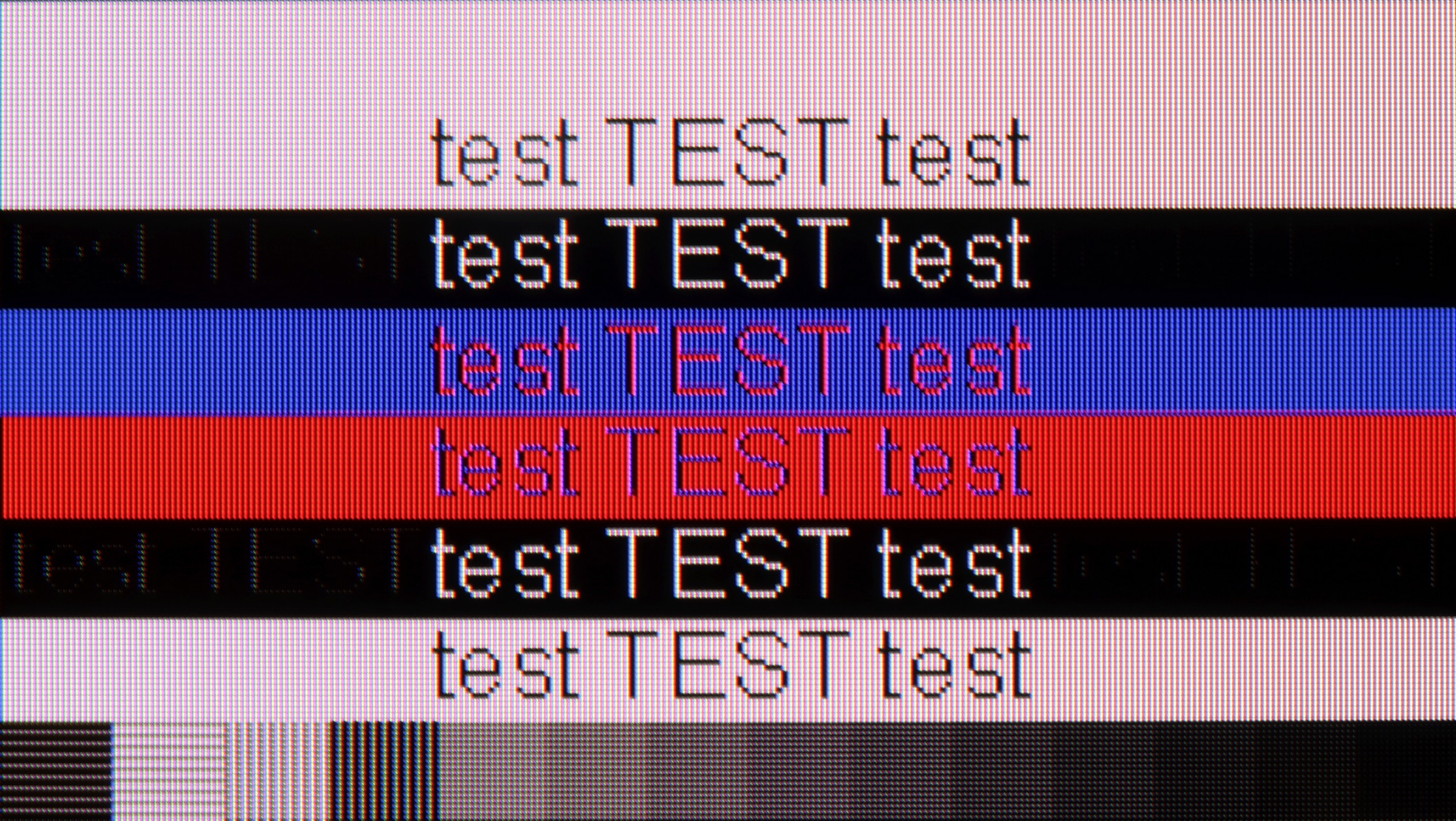
Samsung QN900D offers excellent compatibility with computers, making it a great choice for users looking for a large screen for work and entertainment. It supports full Chroma 4:4:4 colour reproduction, which translates to better image quality when using text and office applications. Font readability is quite decent, especially considering the 8K resolution, which offers an immense level of detail.
Unfortunately, despite the very high resolution, the television does have some issues with bright fonts on a dark background – one can notice slight shadows created by subpixels. It may not be a critical issue, but for more demanding users, it could impact comfort, especially when working in text applications. Nevertheless, the overall image quality and compatibility with computers are of a high standard. It's also worth praising the television for supporting 240Hz at lower resolutions such as 4K. This allows high-end PCs to showcase their prowess in games.
The QN85F performs really well in terms of collaboration with computers. Thanks to the PC mode with a refresh rate of up to 144 Hz, support for G-Sync, and low input lag, gaming on a personal computer is very enjoyable and should not cause frustration even for more demanding gamers. The readability of the fonts is also good – the TV supports 4:4:4 chroma, so standard texts look sharp and clear. The problem only arises with very thin letters. Regardless of the refresh rate setting – whether it’s 144, 120, or 60 Hz – horizontal, thin lines were poorly visible. Reducing the refresh rate slightly improved the situation, but never to the point where one could say they were displayed perfectly.
Viewing angles
7.8/10
3.2/10
The viewing angles on the QN900D television are very good, despite the use of a VA panel. Thanks to a special coating that widens the viewing angles, the image remains flawless even when viewed from an angle. This is particularly important when there are more people in the room – every viewer, regardless of their seat, can enjoy excellent image quality without distortion or loss of colour. This makes the Samsung QN900D a great choice for watching movies and sports broadcasts with a larger group.
The viewing angles on the QN85F are the classic Achilles' heel of most LCD TVs with VA panels. When looking at the screen from an angle, the drop in brightness becomes apparent quite quickly, with whites starting to grey and colours losing their intensity. This is the price to pay for the high contrast that this technology offers. Samsung could have opted for a better coating to enhance viewing angles in this model, but it is not present here. In practice, this means that the best viewing experience will be obtained when sitting directly in front of the television, and any significant deviation will result in a noticeable loss of picture quality.
TV efficiency during daytime
5/10
6.9/10

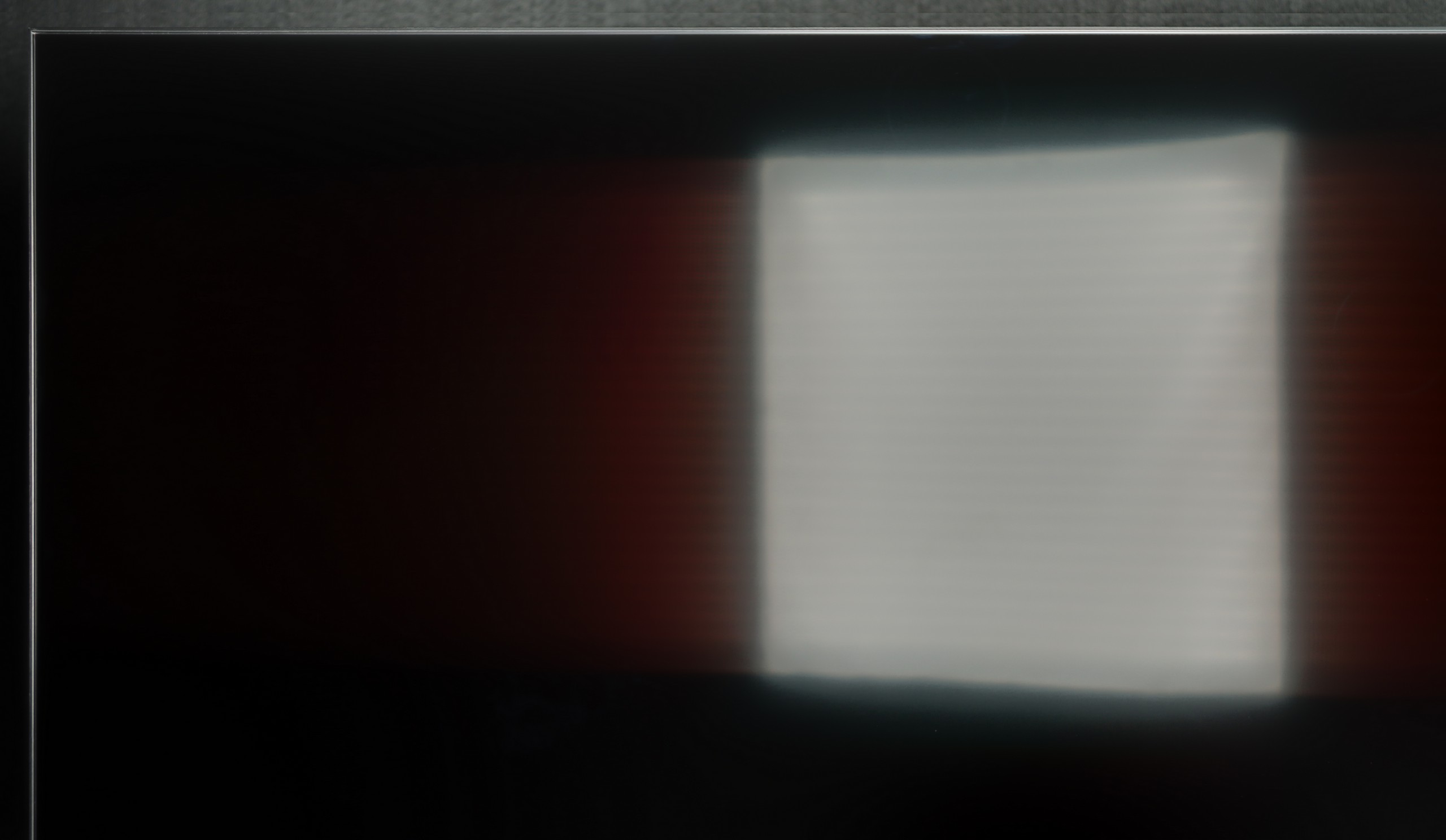


Matrix brightness
Average luminance SDR
Samsung QN85F : 690 cd/m2
Samsung QN900D Neo QLED 8K: 387 cd/m2
When it comes to the performance of the Samsung QN900D TV in daytime conditions, it generally presents itself as average. The television has a special anti-reflective coating that helps reduce glare, however, due to the VA panel and the angle-enhancing coating, light reflections are strongly dispersed horizontally - resembling the colours of a rainbow. This results in a loss of image richness, especially in bright rooms where intense light sources can negatively affect the quality of the displayed image.
QN85F performs exceptionally well during the day. The satin finish of the screen combined with high brightness makes it a television designed for bright rooms. Colours do not lose their intensity, and the image does not wash out even when a lot of light floods in. The television itself is bright enough to handle a lounge with large windows facing south. Therefore, the QN85F gives us an image that allows us to watch movies or matches during the day without annoying reflections and the feeling that the picture disappears in the sunlight.
Details about the matrix
Subpixel Structure:

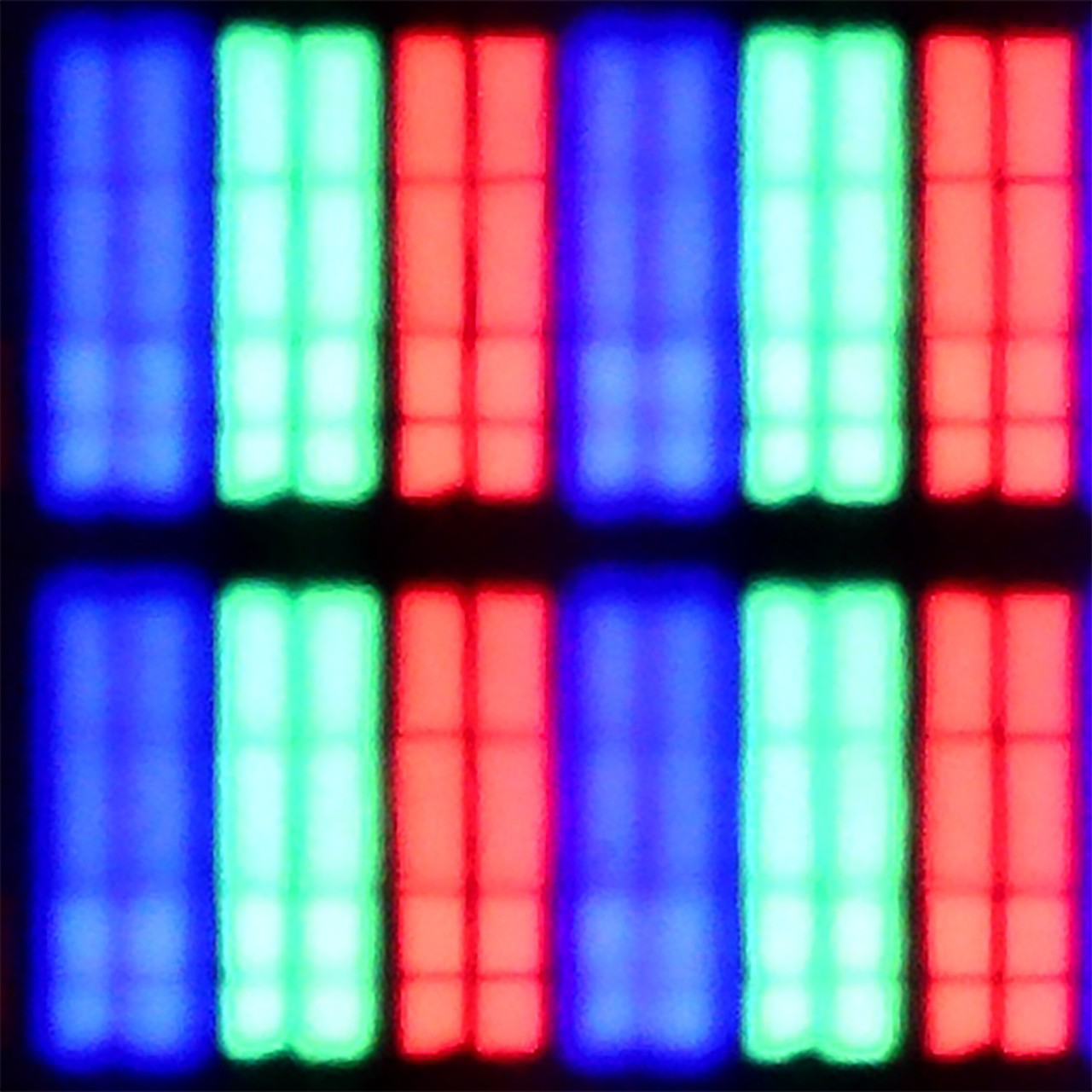
Panel uniformity and thermal imaging:


Samsung QN900D Neo QLED 8K
Samsung QN85F
TV features
7.4/10
7.3/10
- HDMI inputs0 x HDMI 2.0, 4 x HDMI 2.1 40Gbps0 x HDMI 2.0, 4 x HDMI 2.1 48Gbps
- OutputsToslink (Optical audio), eARC (HDMI), ARC (HDMI)Toslink (Optical audio), eARC (HDMI), ARC (HDMI)
- Network InterfacesWi-Fi 2.4GHz, Wi-Fi 5GHz, Ethernet (LAN) 100MbpsWi-Fi 2.4GHz, Wi-Fi 5GHz, Ethernet (LAN) 100Mbps
- TV receptionDVB-T, DVB-T2, DVB-S, DVB-S2, DVB-CDVB-T, DVB-T2, DVB-S, DVB-S2, DVB-C
Classic features:
- Recording to USB (terrestrial TV)
- Recording programming
- Picture in Picture (PiP)
- RF remote control (no need to aim at the screen)
- Backlit remote control
- Teletext
- Audio only mode
- Bluetooth headphones support
- Simultaneous Bluetooth headphones & TV audio
Smart features:
- AirPlay
- Screen mirroring (Windows Miracast)
- Voice search
- Voice search in native language
- Ability to connect a keyboard and mouse


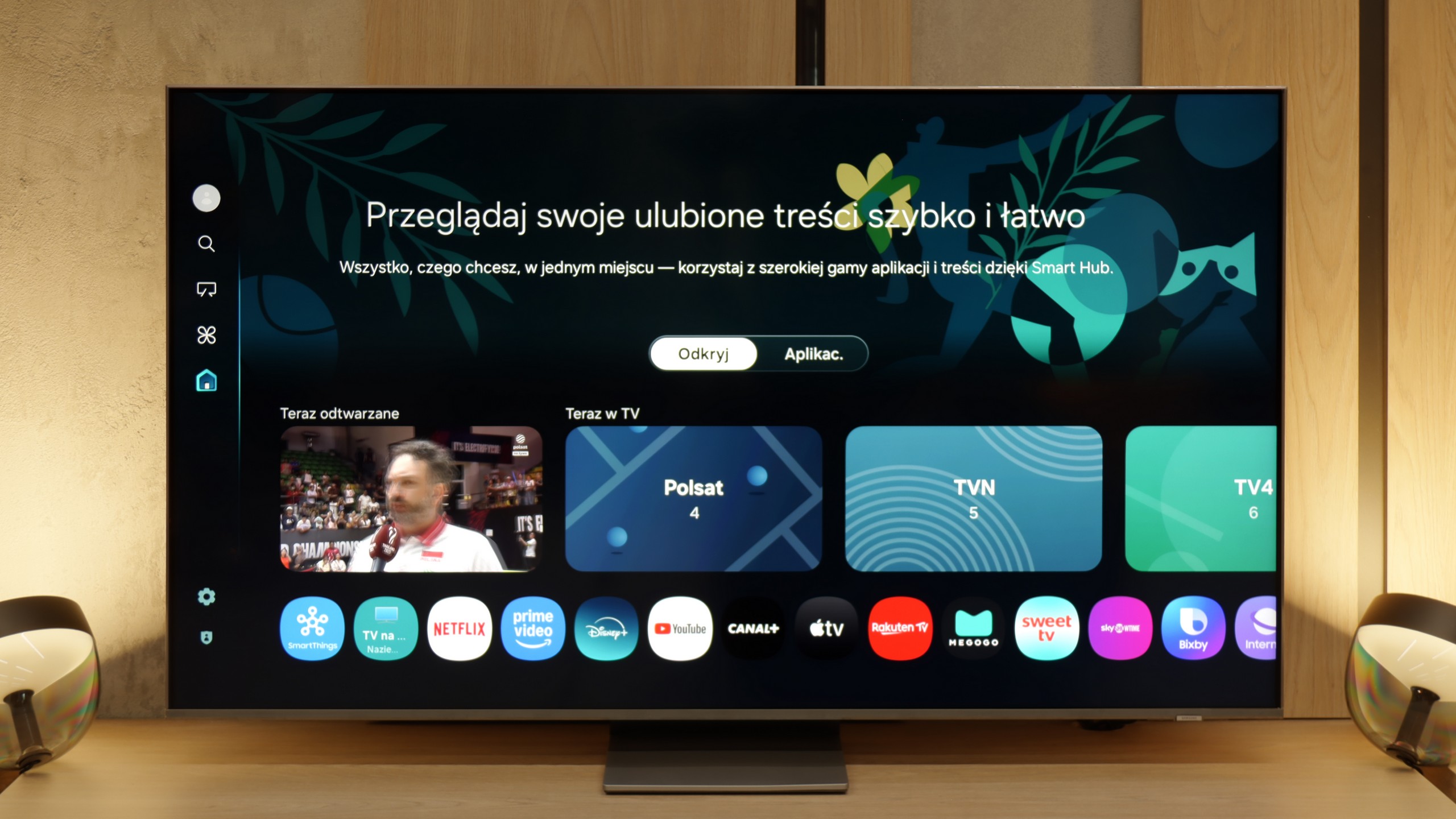
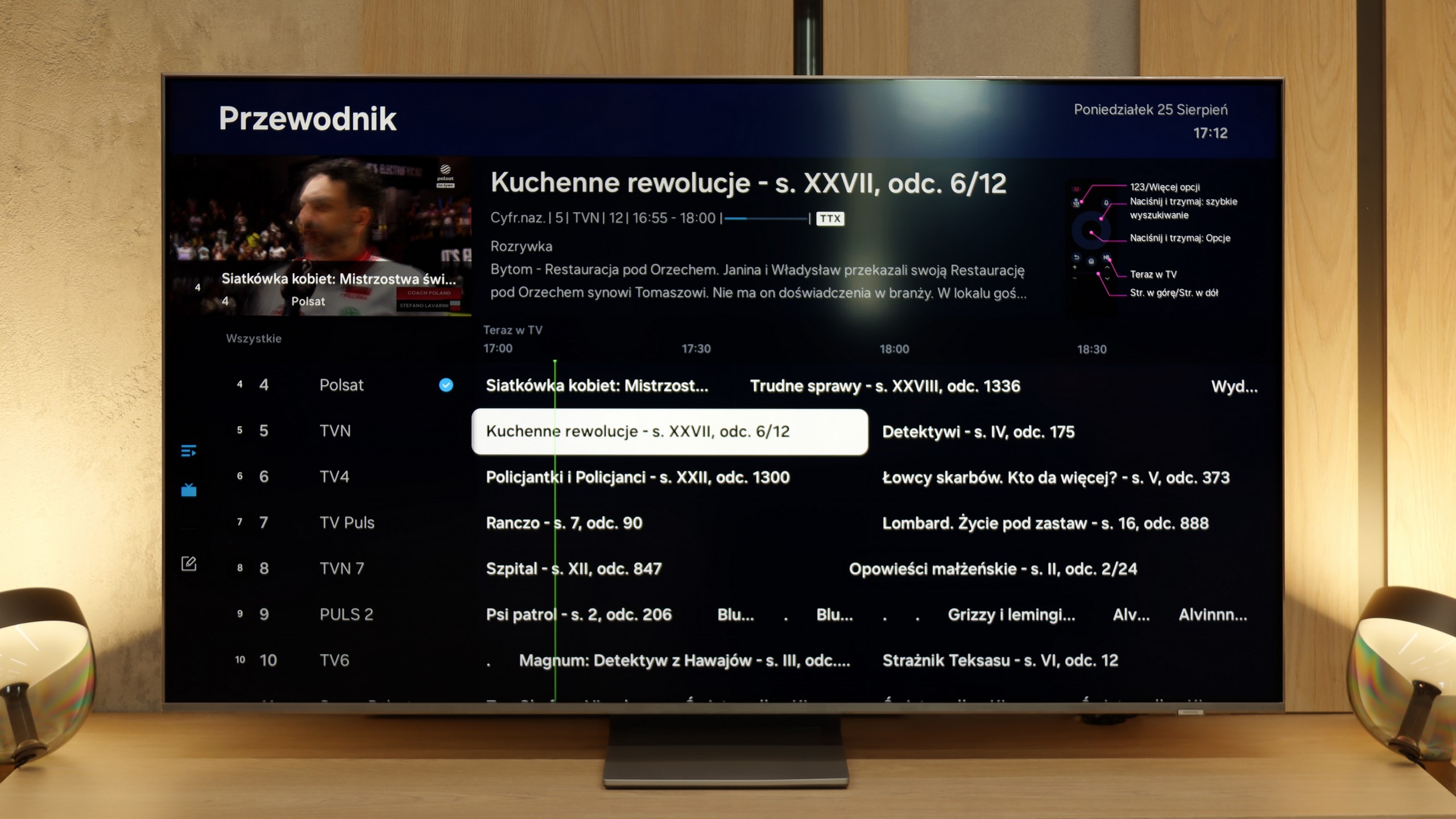
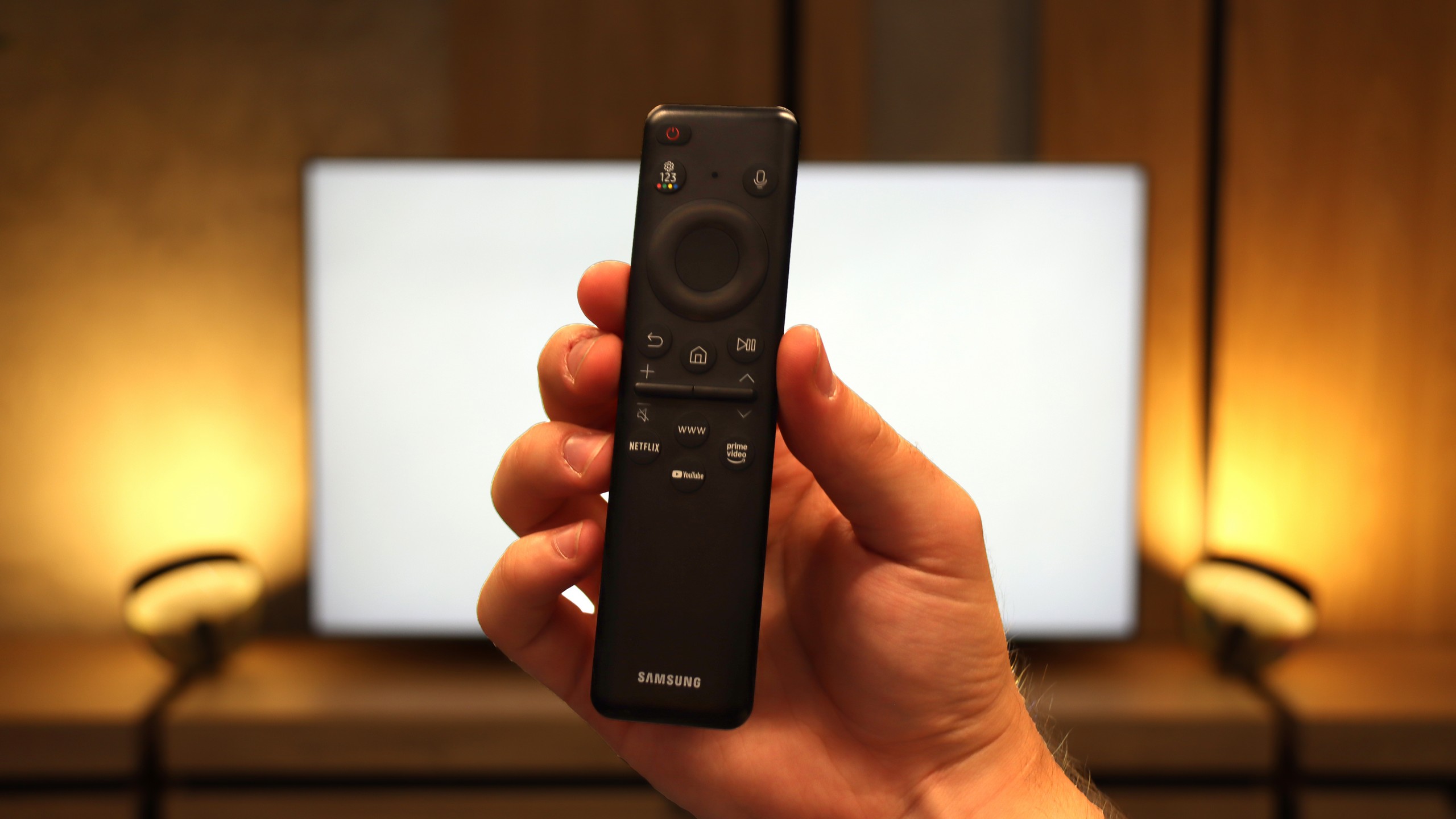
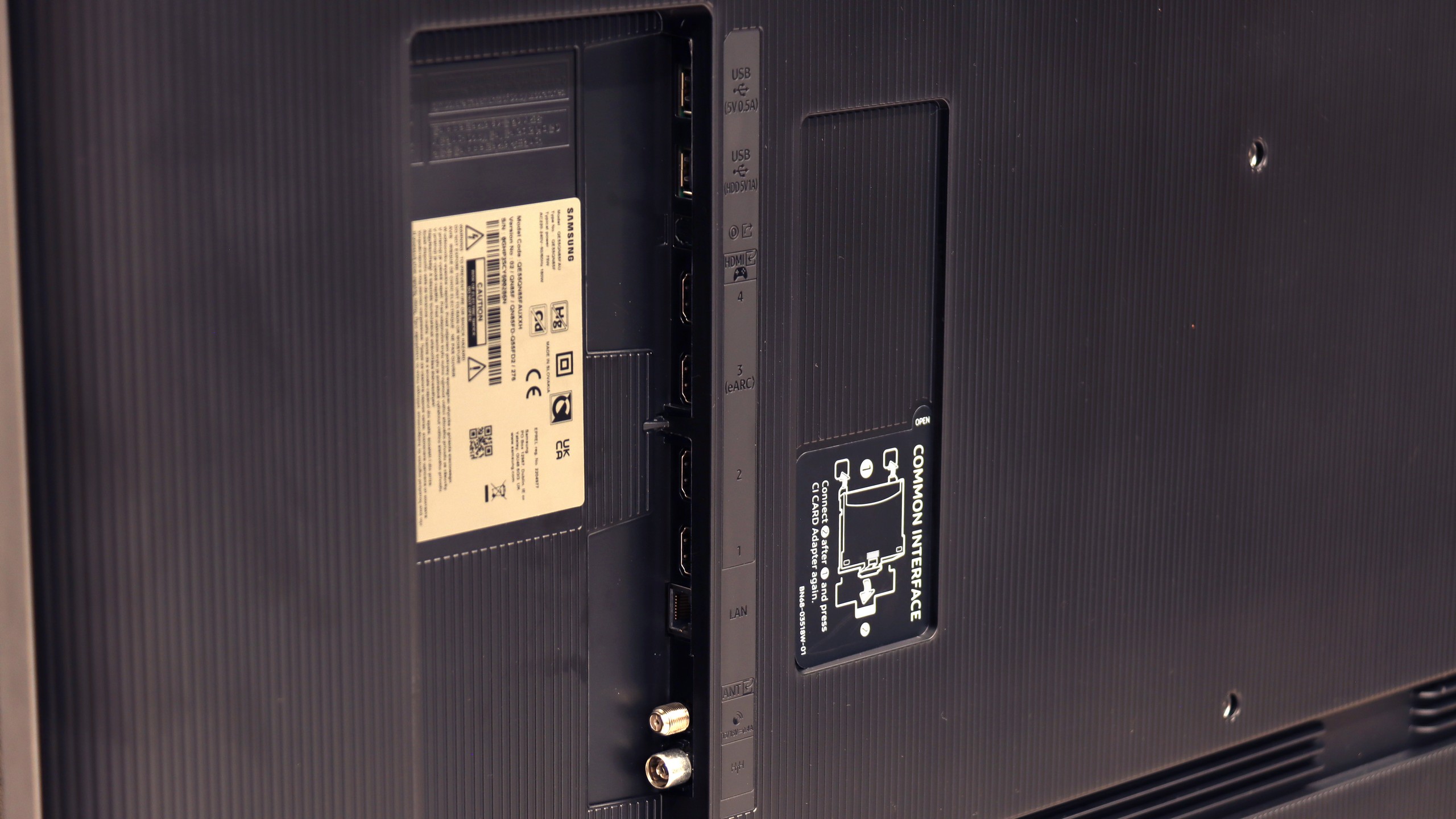
The Tizen system that powers the Samsung QN900D offers excellent integration with other devices, allowing for convenient use of numerous applications, including AirPlay. Users can also control other equipment using the SmartThings app. The television also works with lighting systems such as Philips Hue, which helps create an atmospheric setting during movie screenings.
In everyday use, the QN900D performs brilliantly. The solar remote can control other devices, such as set-top boxes, making the lack of a recording function less of an issue. Additionally, the television offers a Picture-in-Picture (PiP) feature, and with its 8K resolution, it even allows the screen to be split into four sections, making it exceptionally functional and useful for watching multiple programs at once as well as for effective work with various image sources.
The Samsung QN900D also stands out with its modern design. Its slim profile makes it the thinnest Mini LED television on the market, and the use of the One Connect module enables tidy cable management, giving the area around the TV a neat and elegant appearance. The central stand adds lightness and creates the impression that the television is floating in the air, which imparts a unique character. Additionally, the Ambient Mode feature allows for decorative graphics to be displayed or the image to be adjusted to suit the interior, making the television an integral part of the room, even when it is turned off.
Smart TV and Tizen System
Samsung QN85F runs on its proprietary operating system Tizen, which has long been one of the strongest points of the Korean manufacturer. The platform operates quickly, is well-developed and provides access to virtually all the necessary applications. Here we have AirPlay support, screen mirroring, voice search, and a very clear interface. Everything is controlled by a remote with a minimal number of buttons, designed to give us quick access to the most important applications.
Classic TV Features
When it comes to classic television features, the QN85F offers a rather basic set. The EPG interface is clear and easy to use, resembling a traditional teletext programme list. A downside is the lack of USB recording and the absence of PiP functionality, which Samsung has offered in many other models. This is because the QN85F uses single tuners. For some people, this may be a disadvantage, but considering how few viewers today use traditional linear television, it won’t matter much to most users.
SmartThings and Device Support
A strong element of the entire platform is the SmartThings app. Thanks to it, we can integrate the TV with other smart home devices – not just those from Samsung. We can connect smart lighting like Philips Hue or Yeelight, video intercoms, and many other devices to the system. SmartThings also allows us to control the TV without using a traditional remote – we can use the app on our smartphone, mouse mode, or gesture control if we have a Samsung watch. This makes the QN85F a part of a larger ecosystem and fits perfectly into the trend of smart IoT homes.
Playing files from USB
9.2/10
9.1/10
Supported photo formats:
Maximum photo resolution:

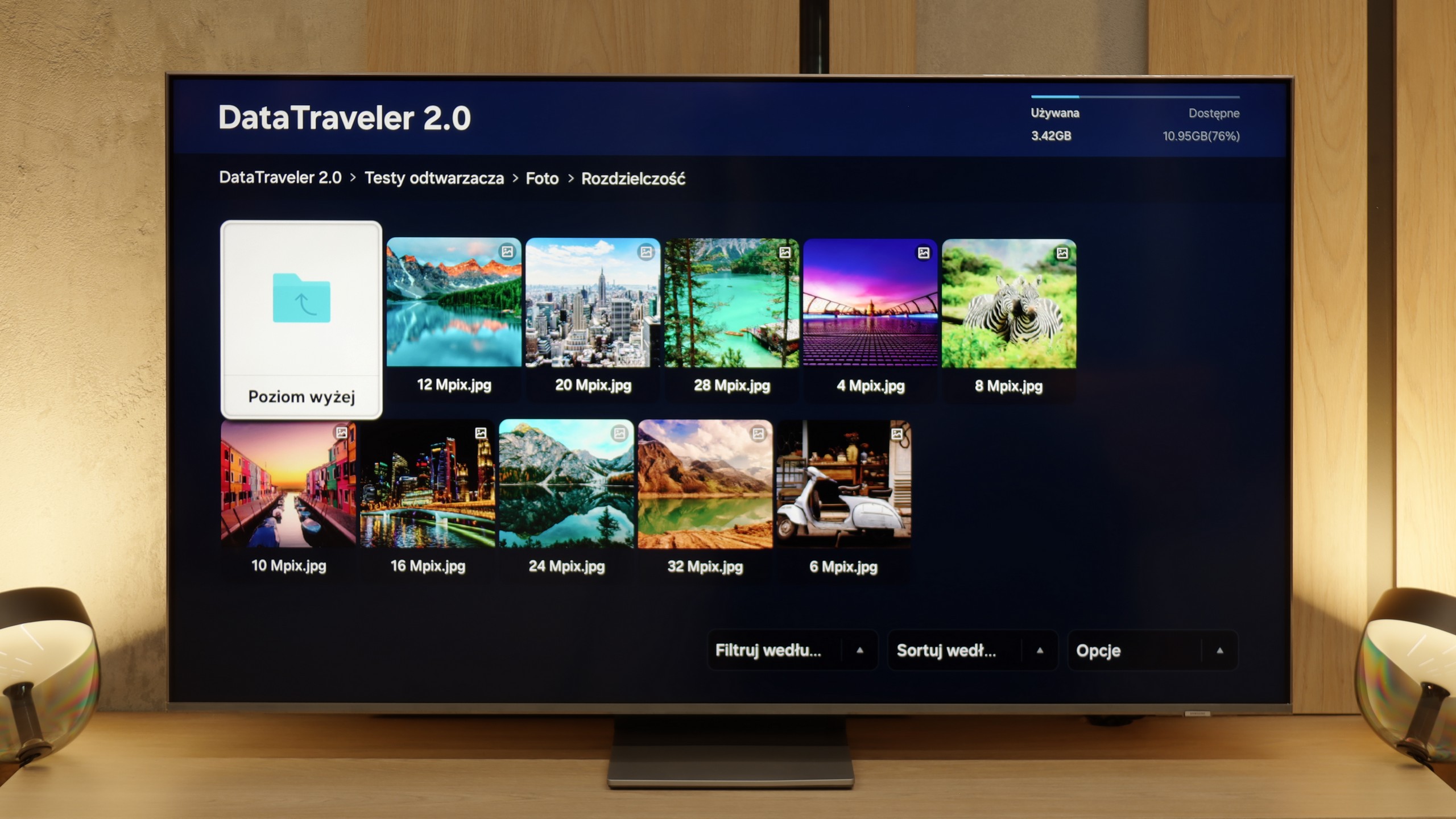
QN900D Samsung plays most popular video and audio formats without any issues. The resolution of photos is also not a challenge for it; however, the television has difficulty opening less common photo formats, including the HEIC format from Apple.
The player in the QN85F works as most people expect, supporting practically all popular formats and is comfortably sufficient even for more demanding users. Movies, music, photos – everything runs without any issues. The only hiccup occurs with HEIC files, which are photos from Apple devices. According to the specifications, they should work, but in practice, they simply do not open. Thumbnails are visible, but the file itself refuses to launch. This looks like a common software bug. Aside from that one case, the player performs correctly and gives no reasons for complaints.
Apps
8.7/10
8.7/10














































Sound
7.4/10
7.6/10
- Maximum volume-84dB
- Dolby Digital Plus 7.1
- Dolby True HD 7.1
- Dolby Atmos in Dolby Digital Plus (JOC)
- Dolby Atmos in Dolby True HD
- DTS:X in DTS-HD MA
- DTS-HD Master Audio
Television Samsung QN900D, equipped with an audio system with a power of 90 W in a 6.2.4 channel configuration. Despite its slim design, the sound is clear and immersive, further supported by Dolby Atmos technology, which provides an engaging audio experience. Unfortunately, like many other Samsung televisions, the QN900D does not support DTS audio tracks, which may be significant for home theatre users.
The Samsung QN85F is equipped with a 2.2 system with a power output of 40 W, and it performs really well for built-in speakers. The bass is pleasant, and the dialogue is clear and easy to hear even during louder scenes. Even at maximum volume, the TV doesn't experience any unwanted vibrations, and nothing rattles. At the bottom of the cabinet, there is a woofer responsible for the bass – therefore, when installing, it's important to ensure it isn't obstructed.
As for formats, the QN85F does not support DTS:X audio, which for Samsung has been a standard for several years now and forces Blu-ray enthusiasts to connect audio devices first to the home theatre system and then to the TV. However, in return, we get support for the more popular Dolby Atmos format, which can add extra depth to the sound of movies and series.
Acoustic Measurements
No acoustic data
84dBC (Max)
75dBC


